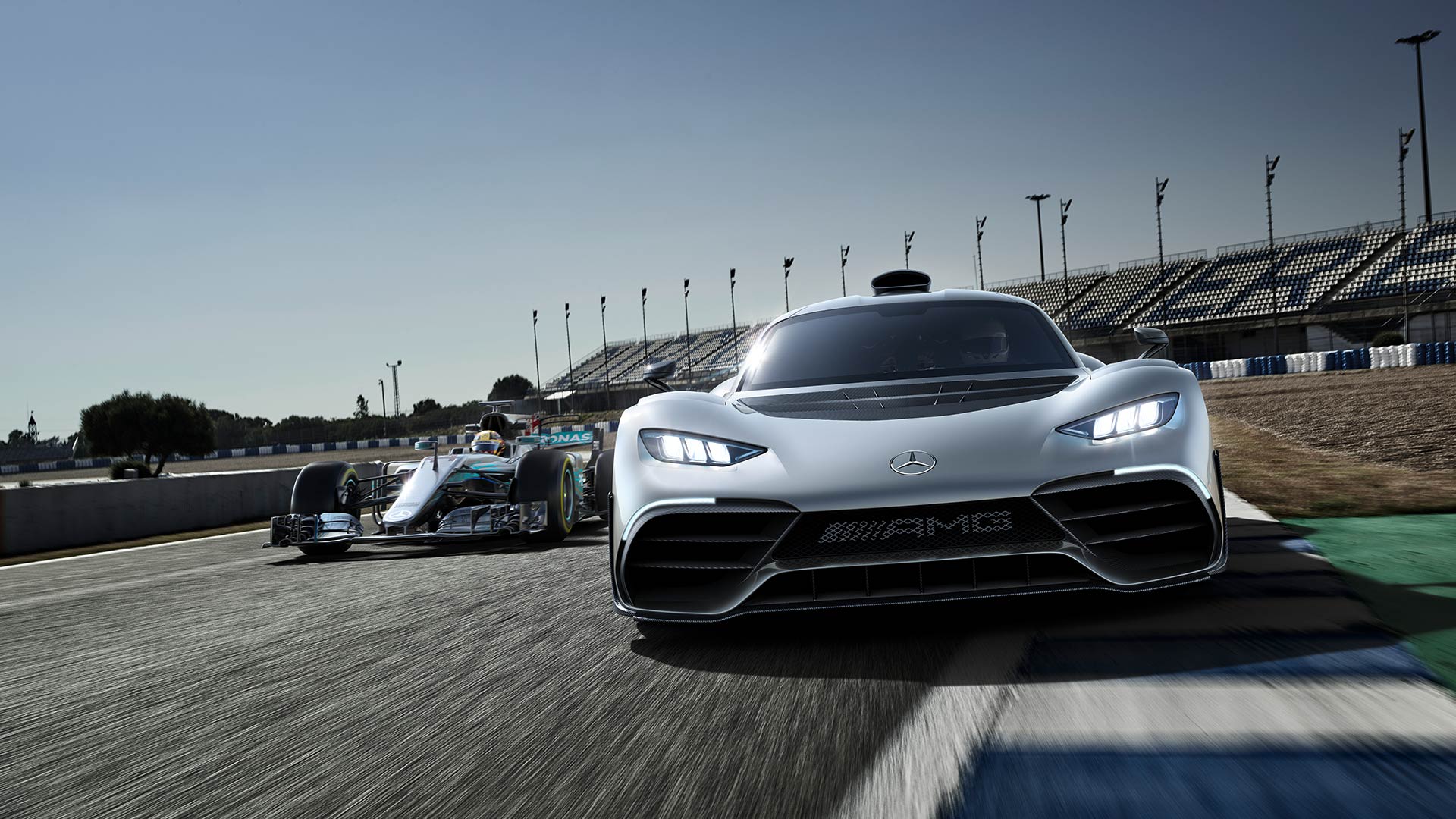
Many of the earliest Formula 1 teams were simple concerns, focused only on the spirit of competition. Today, the world of Formula 1 is dominated by global automotive giants, who use it to develop and promote technology to be used by regular drivers on the road
Ahead of this weekend’s United States Grand Prix in Austin, Texas, we have taken a look at how car manufacturers use modern Formula 1 racing as a worldwide advertising billboard.
More on Motoring Research:
- Road-legal Formula 1 replica could be yours
- One-off Bond theme for Red Bull Racing F1 cars
- Ferrari already top of the Formula 1 sponsorship podium in 2019
Silver Arrows dominate the hybrid F1 era
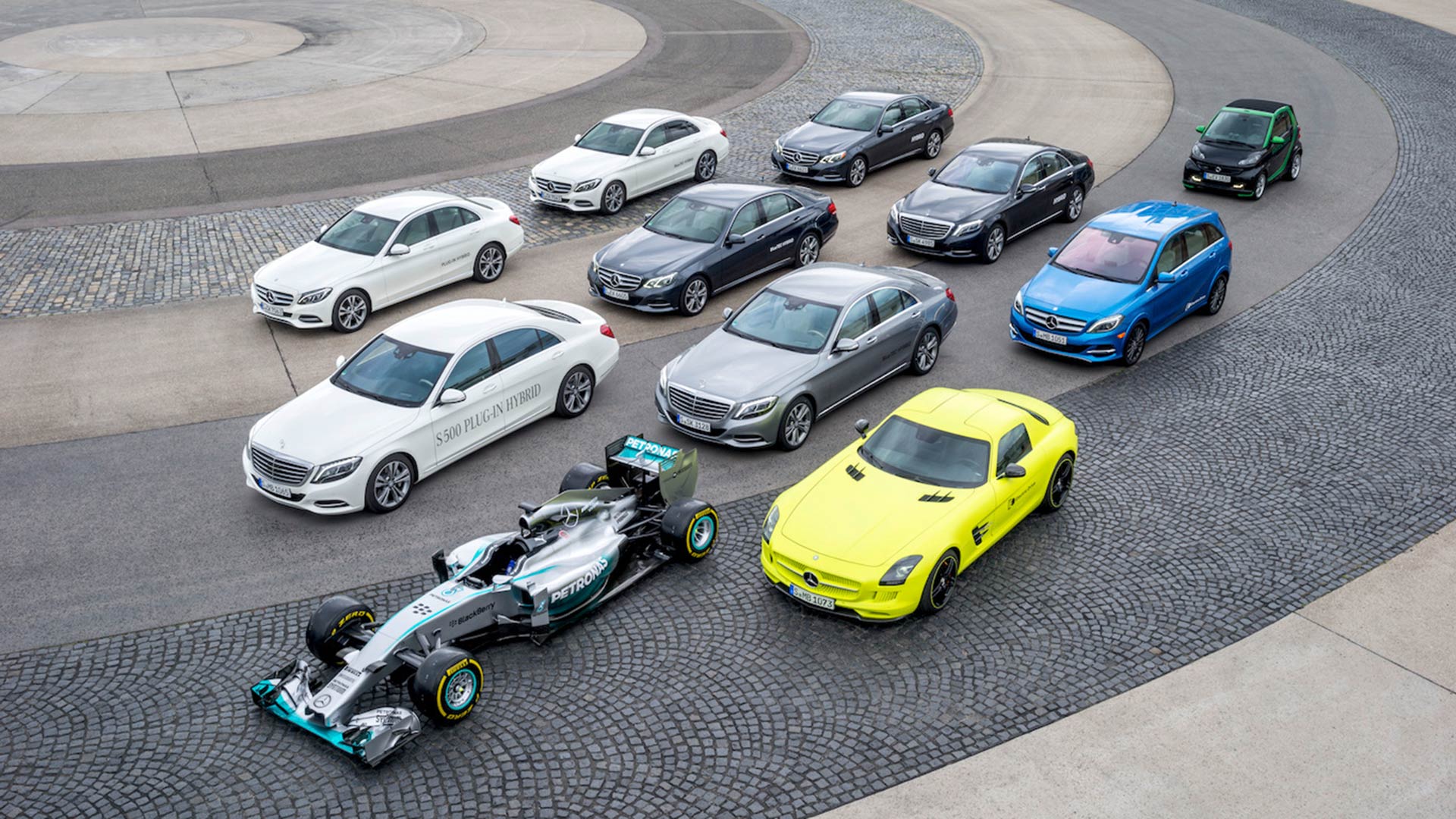
Mercedes-Benz was one of the earliest manufacturers to become involved with Formula 1. Legendary drivers like Juan Manual Fangio and Stirling Moss drove for the team in the 1950s, until 1955 when Mercedes withdrew from motorsport entirely.
2010 saw the return of the Mercedes-Benz team to Formula 1. The introduction of turbocharged V-6 hybrid engines in 2014 has seen the team win six Constructors’ Championships, with Lewis Hamilton on course for another Drivers’ Championship this year.
2020 Mercedes-AMG One
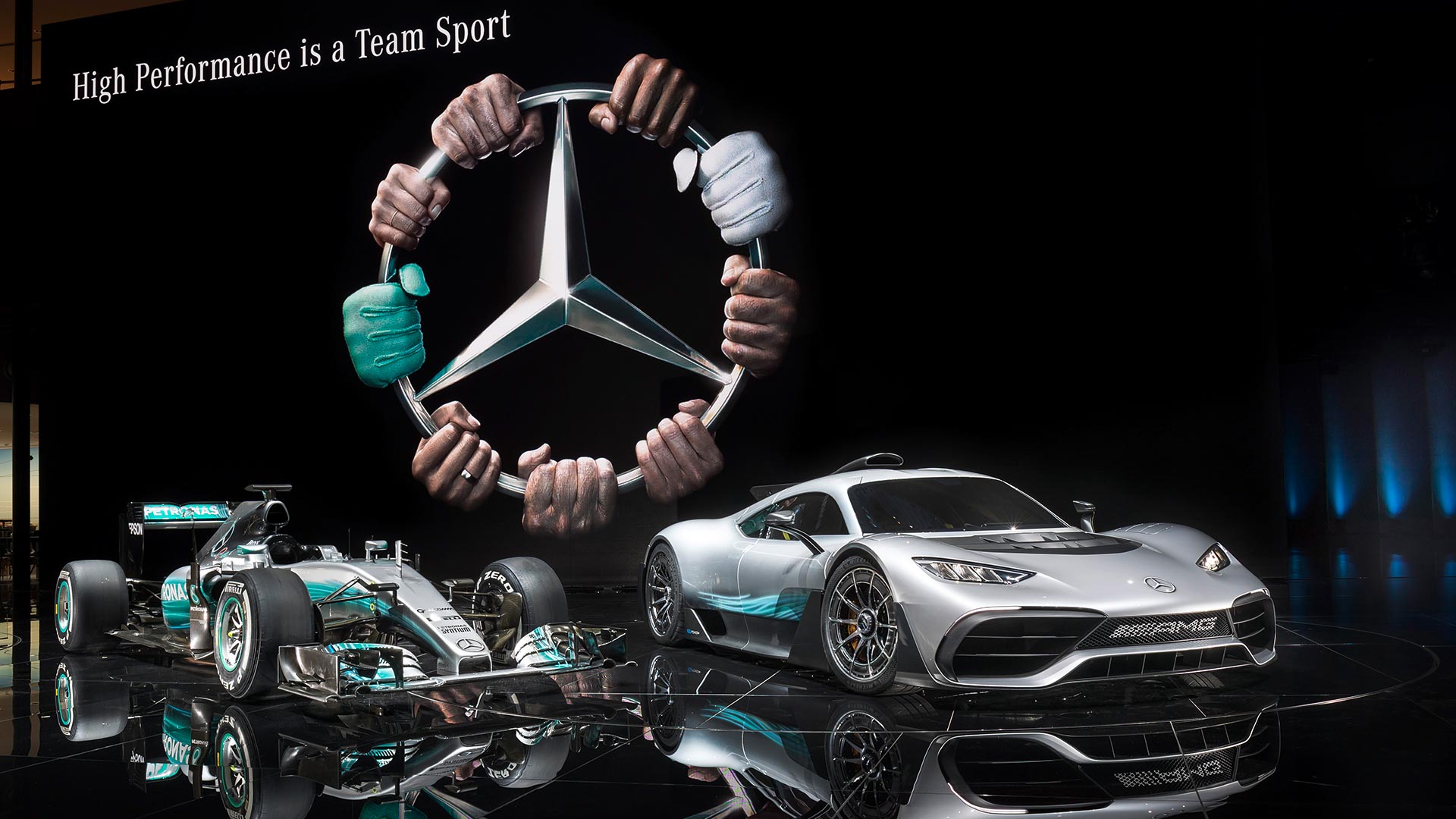
Mercedes-AMG has looked to turn that on-track success into a road car like no other. Known simply as the ‘One’, this hypercar is powered by the same 1.6-liter turbocharged V-6 engine as used in the F1 race cars.
With more than 1,000 horsepower, and an eight-speed paddle shift gearbox, this is an extremely direct demonstration of motorsport technology for the road.
Lewis Hamilton reveals the Mercedes-AMG One
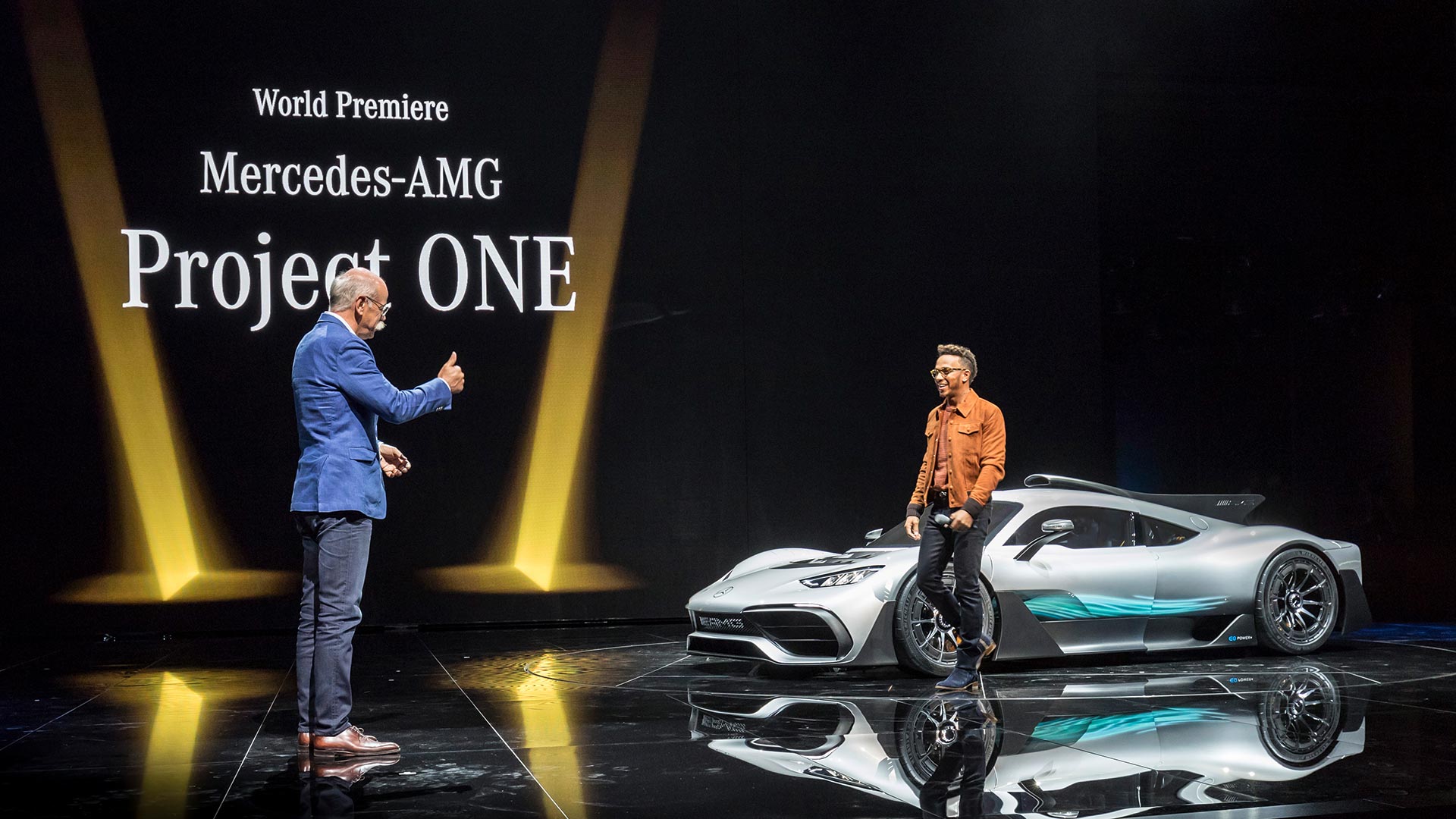
Mercedes-AMG star driver Lewis Hamilton was on hand to help reveal the One, driving it on to the stage at the 2017 Frankfurt Motor Show. A combination of four electric motors, along with the turbocharged V-6 engine, allows the One to travel up to 15 miles on battery power alone.
Lewis Hamilton has been involved in developing the One, meaning those who buy the 275 production cars will know its abilities have been tested by a multiple F1 World Champion driver. Hamilton’s team mate, Valtteri Bottas, has also spent time with the 217 mph One.
An almost guaranteed Mercedes-Benz leader on track
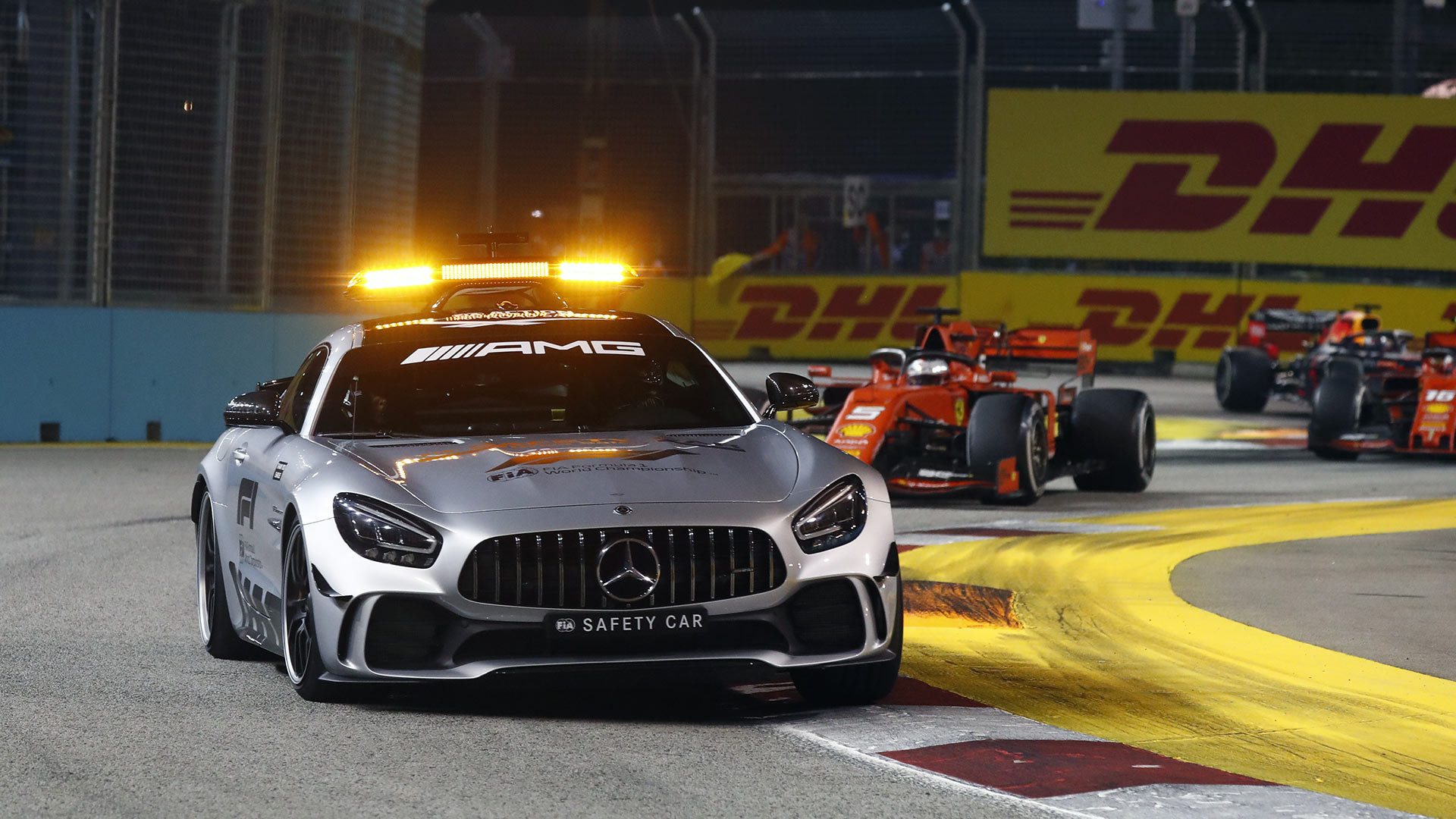
Mercedes-Benz entered into an agreement with Formula 1, agreeing to provide the safety car for the championship from the 1996 season onwards. This includes cars used by the medical teams and doctors, along with other official vehicles.
It means that in the event of a race being neutralized due to bad weather or an accident, millions of F1 fans around the world will see a Mercedes leading the field. Various road-going Mercedes models have been used, with the 577 horsepower AMG GT R currently responsible for safety car duty.
Alfa Romeo celebrates a return to Formula 1
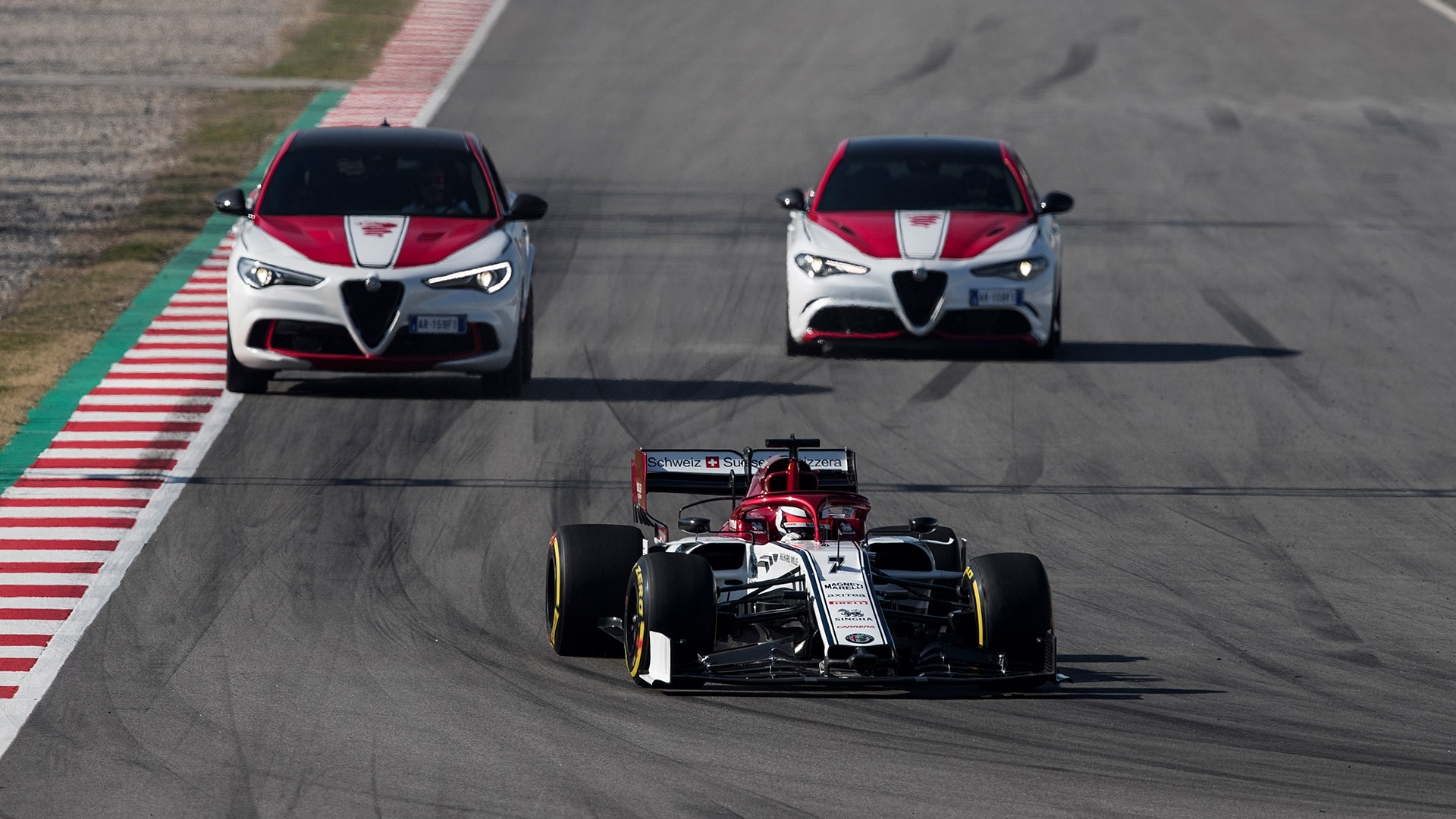
Italian company Alfa Romeo can trace the roots of its motorsport activity as far back as 1911, and it became active in Formula 1 from the outset. This included seeing its driver, Giuseppe Farina, win the inaugural FIA World Championship of Drivers in 1950.
Alfa withdrew as a factory team in 1951, but continued to supply engines to F1 until 1985. For the 2018 season, Alfa Romeo entered into a partnership with the Swiss Sauber team. Heading into 2019, this resulted in the outfit being renamed Alfa Romeo Racing.
2019 Quadrifoglio Alfa Romeo Racing Special Editions
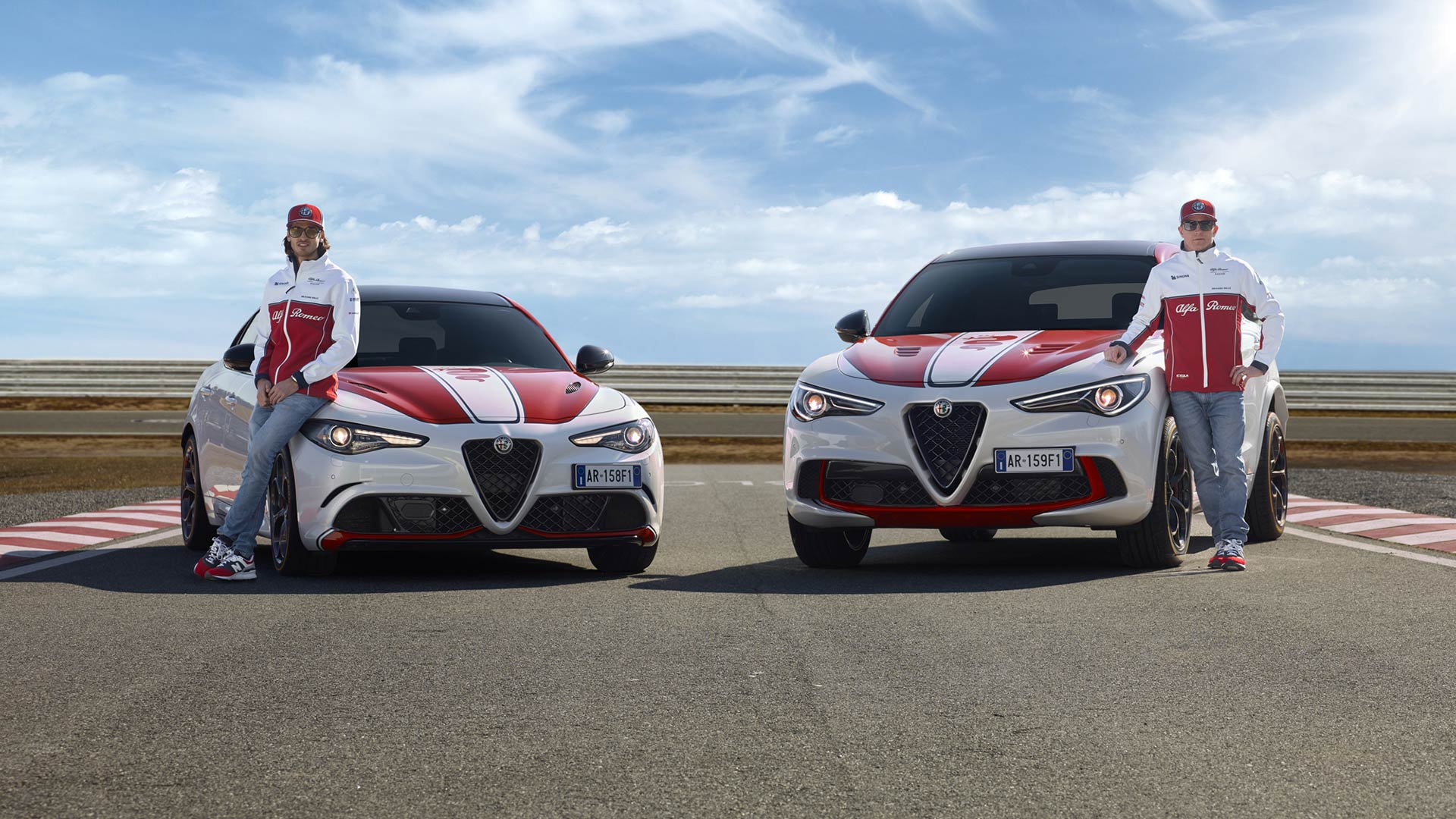
Alfa has been keen to use its reborn Formula 1 project to help market its range of road cars. This includes ‘Alfa Romeo Racing’ versions of the Giulia Quadrifoglio sedan, and Stelvio Quadrifoglio SUV, wearing liveries inspired by the F1 racing cars.
Both Giulia and Stelvio use a 2.9-liter turbocharged V-6 engine producing 513 horsepower, and are fitted with an Akrapovic titanium exhaust system. Current Alfa Romeo Racing drivers Kimi Räikkönen and Antonio Giovinazzi were drafted in to help show off the new cars.
2019 Ferrari Monza SP1
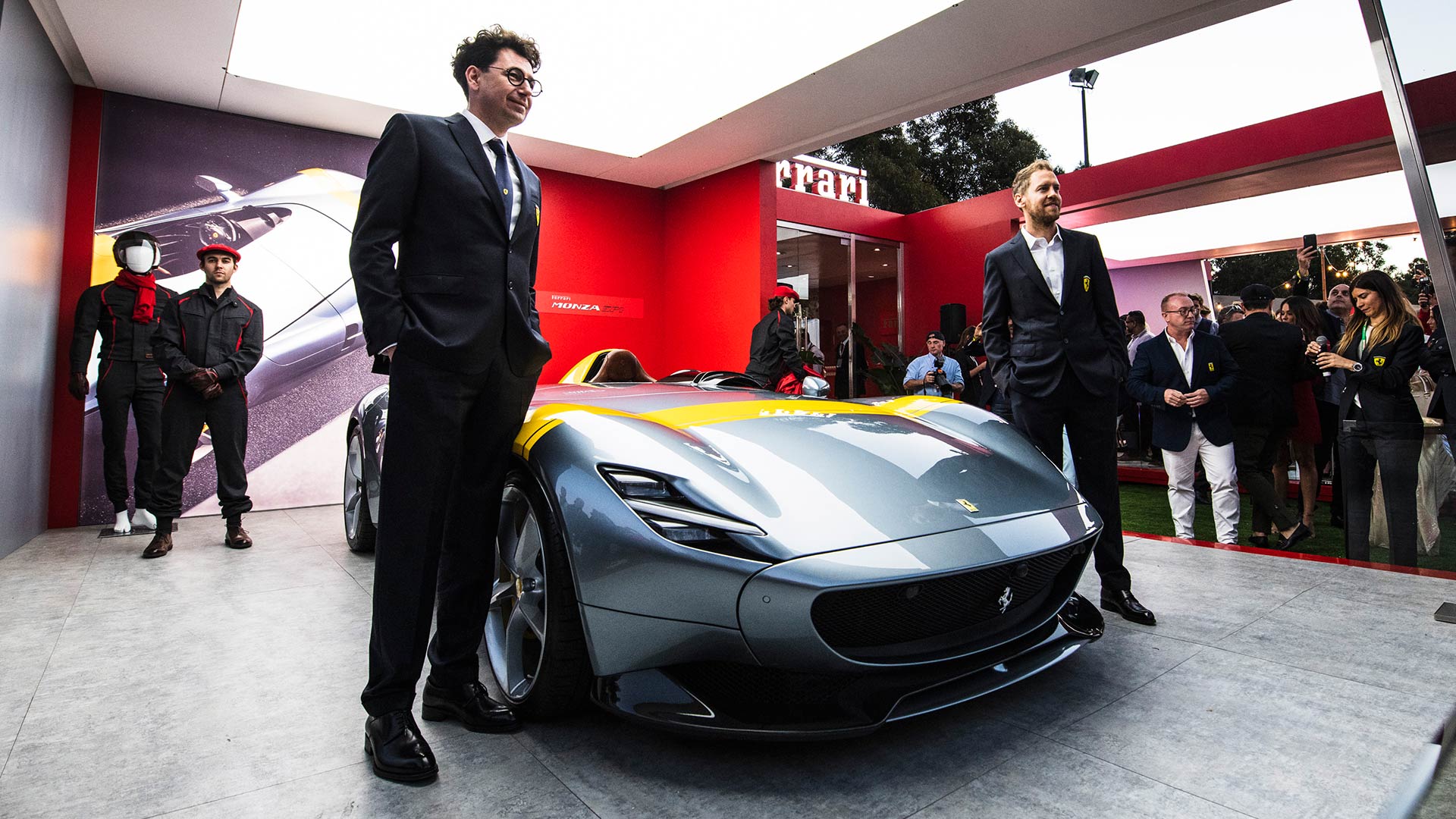
Enzo Ferrari was famous for initially having no interest in producing road cars, with his interest solely focused on motorsport. However, after WWII, Ferrari began to produce cars for the street in order to fund his racing team.
Having competed in every season of Formula 1 since 1950, Ferrari is now intrinsically linked with the category. Such a close association means Scuderia Ferrari members are frequently involved with road cars. Here, Team Principal Mario Binotto, and driver Sebastian Vettel, are seen with the limited edition Monza SP 1.
Sebastian Vettel and Ferrari California T
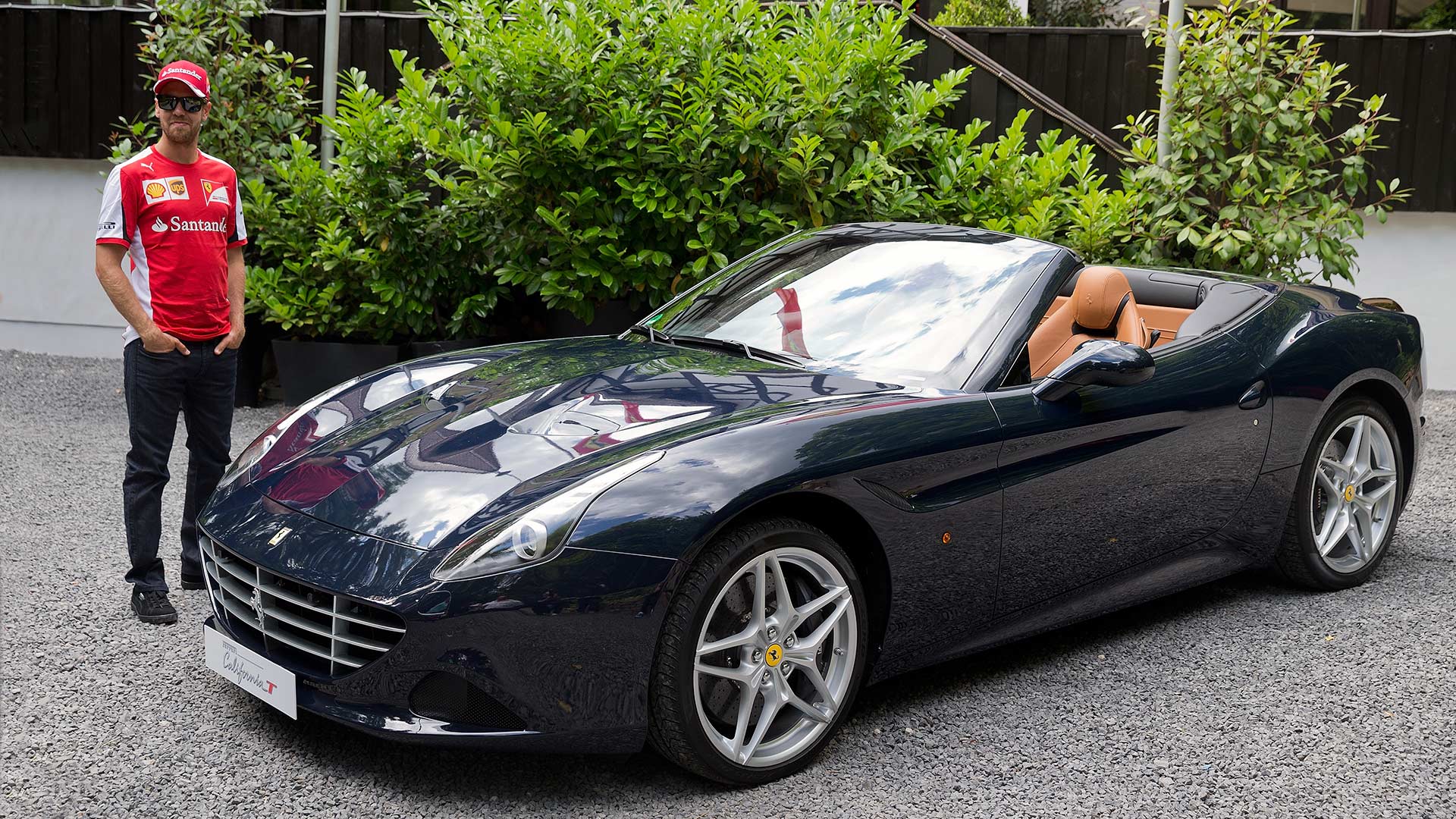
The advantage of driving for a company which solely makes exotic sports cars means that the company car choices tend to be impressive. Four-time World Champion Sebastian Vettel moved to Ferrari for the 2015 season, and wasted no time in getting involved with the range of road cars.
Vettel has appeared in videos promoting Ferrari road cars, including the California T convertible. Introduced in 2014, the California T was the first Ferrari to use a turbocharged engine since the F40, mirroring the move of F1 to forced-induction power.
Michael Schumacher and his car collection
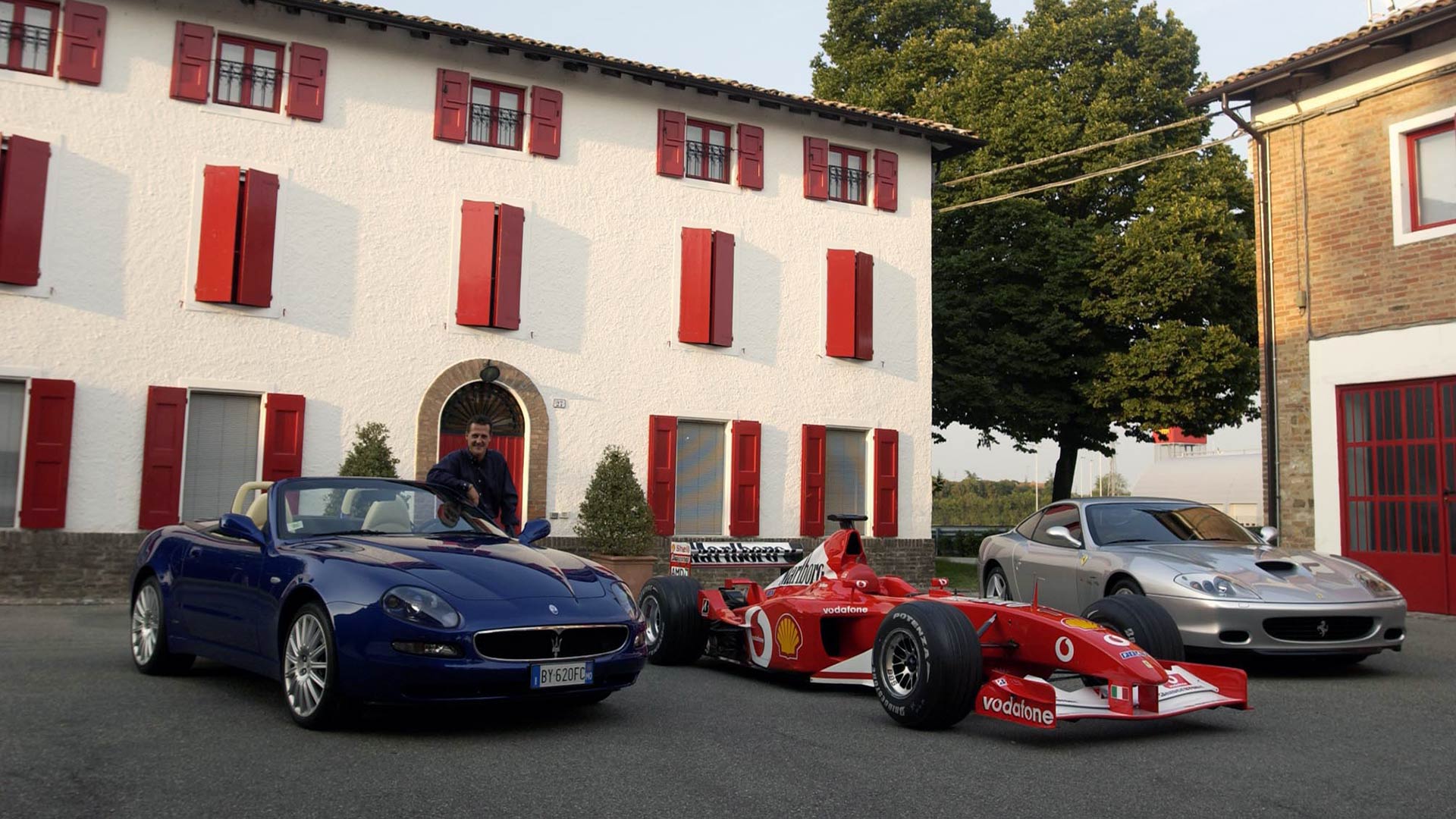
Winning five Formula 1 World Championships with Ferrari between 2000 and 2004, Michael Schumacher is rightly regarded as a legend by the Scuderia. His move to the Italian team in 1996 transformed Ferrari into a world-beating outfit, with a level of ruthless on-track efficiency never seen before.
Schumacher was also a keen advocate for Ferrari’s road cars, seen here alongside his race car and two vehicles from his own personal collection.
Developing the Enzo Ferrari with Michael Schumacher
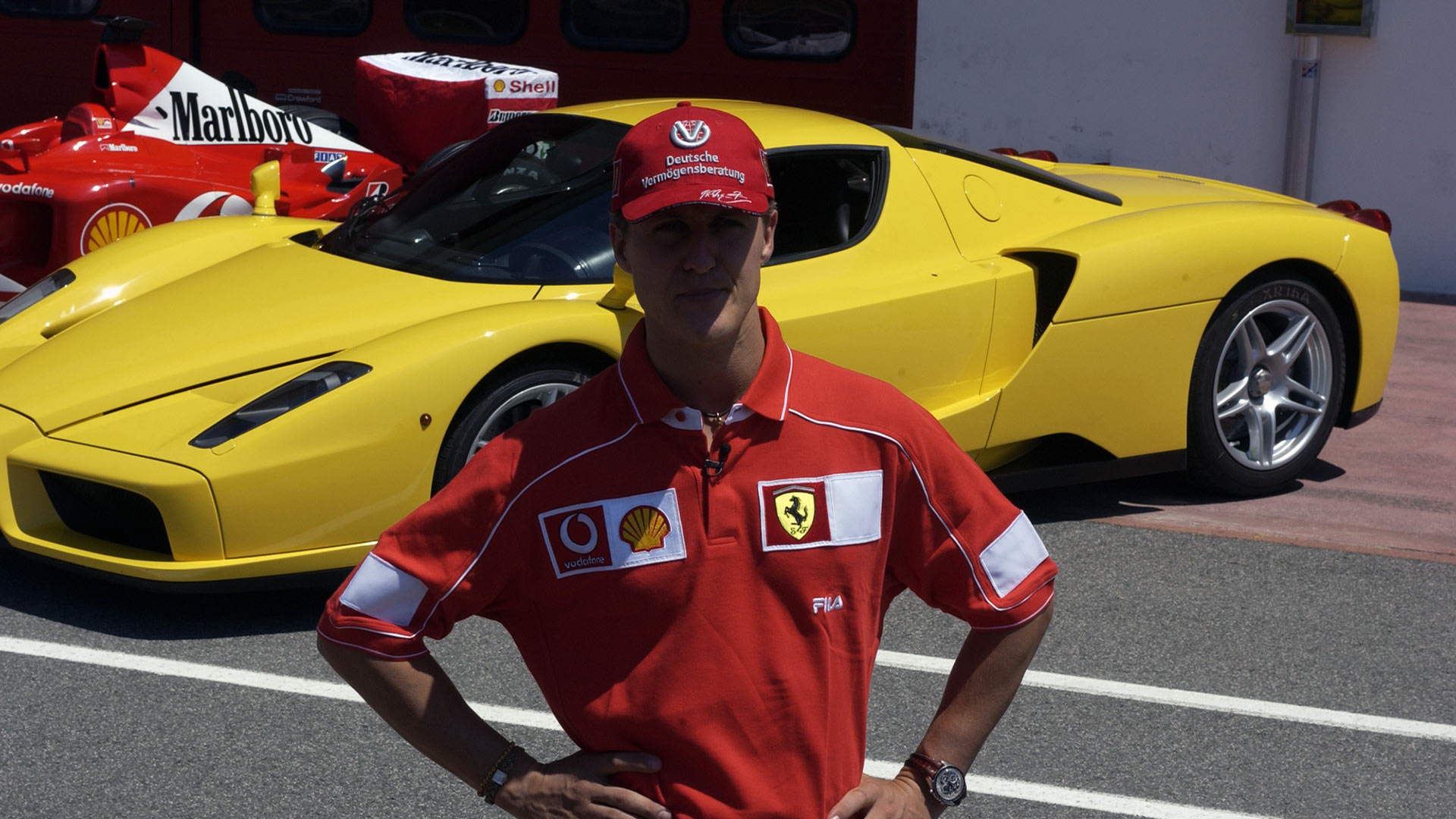
Much like Mercedes-AMG with the One, Ferrari has created several F1-inspired road cars and made use of its talent in the Scuderia to help develop them. Schumacher’s dominance of the sport coincided with the creation of the 2002 Enzo Ferrari. This hypercar was made from carbon fiber and powered by a mid-mounted V-12 engine with 651 horsepower.
Other items taken from Formula 1 included a paddle shift transmission, and brakes featuring carbon ceramic discs. Schumacher assisted in refining the abilities of the Enzo, and also worked on the track-only FXX version. The German driver later owned examples of both the Enzo and FXX.
Abarth 695 Tributo Ferrari for Alonso and Massa
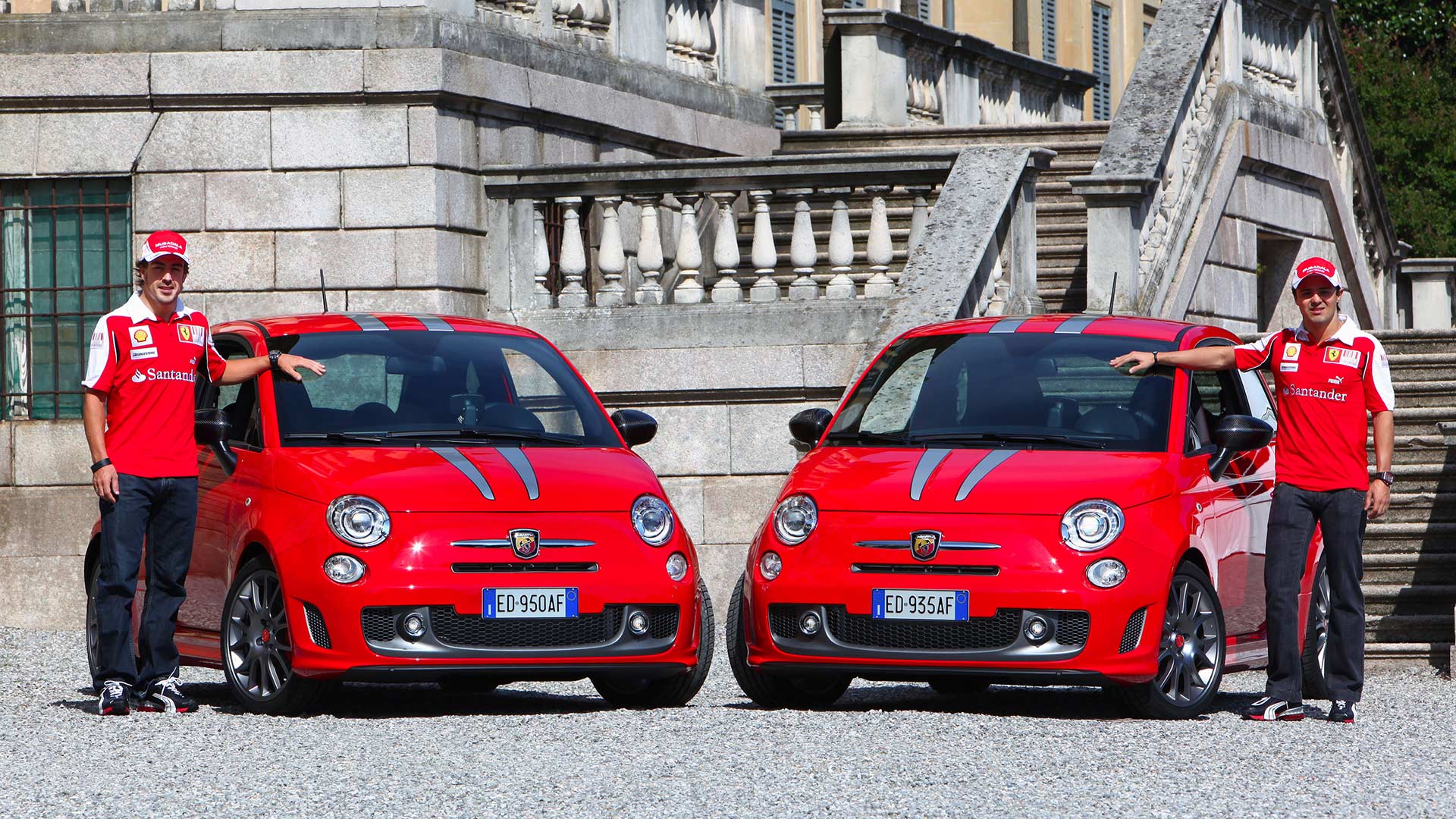
Alonso and Massa will have needed sizeable garages during their time at Ferrari. In 2010, the duo received their own Abarth 695 Tributo Ferrari, featuring a 180 horsepower 1.4-liter turbocharged four-cylinder engine. Naturally, an F1-inspired paddle shift transmission was part of the package.
Painted in the same Scuderia Red as the Ferrari F1 racers, carbon fiber was used for various parts including the exterior mirror covers. Brembo performance brakes, and special 17-inch wheels added to the deal, but the F1 link was tenuous at best.
BMW’s brand takeover of Williams Racing
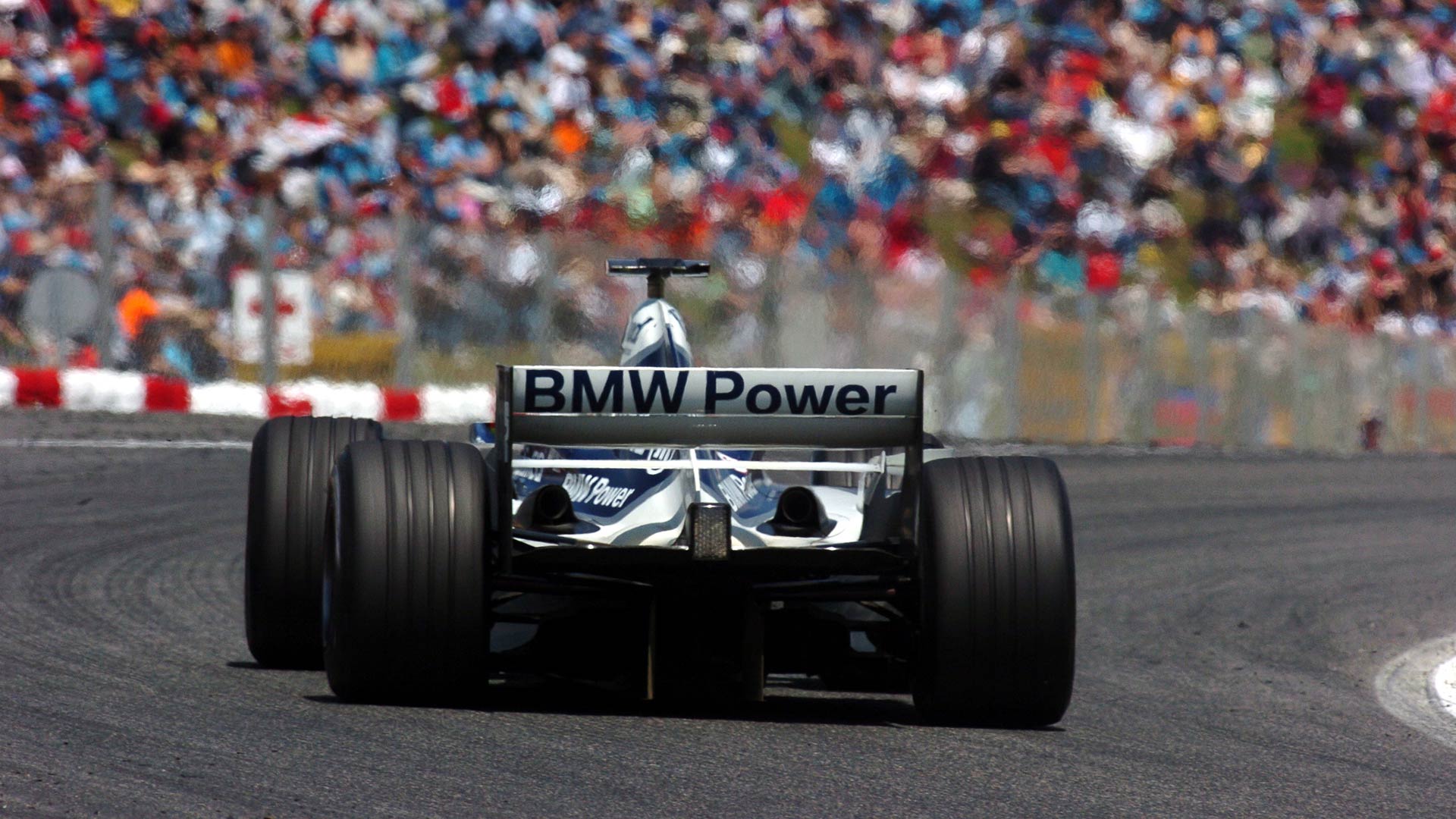
In the early 2000s, the only cars capable of coming close to Ferrari during their dominant period were powered by BMW engines. The German company had launched a partnership with the Williams team, leading to the outfit being branded as BMW Williams F1.
Along with developing V-10 engines for use in the Williams F1 cars, the racing cars were also finished in a BMW-inspired blue and white livery. German driver Ralf Schumacher, brother of Michael Schumacher, was retained along with Columbian Juan Pablo Montoya for driving duties.
F1 technology for BMW road cars
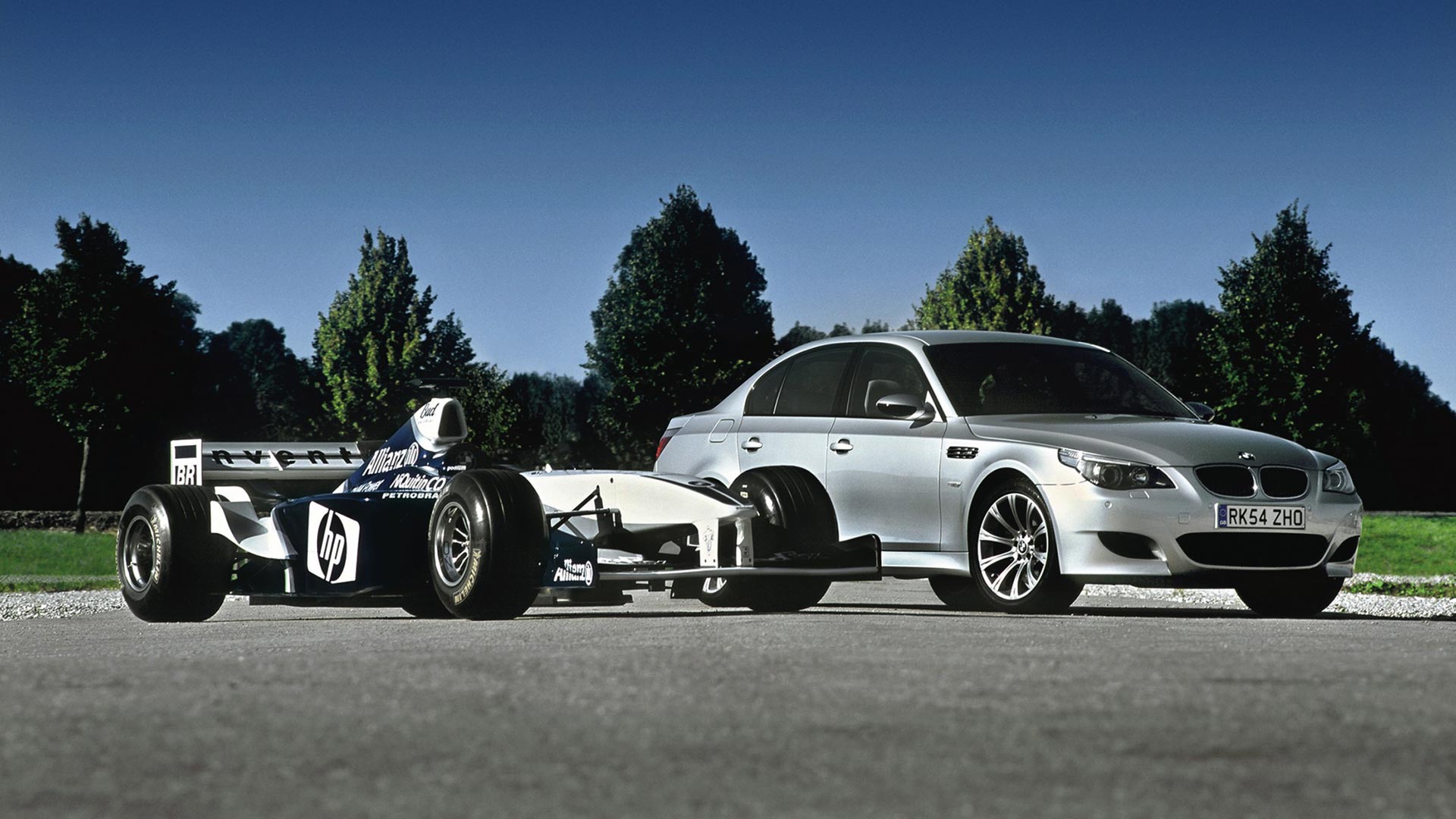
Whilst Ferrari would still take multiple championships, the naturally aspirated P83 V-10 engine built by BMW in 2003 was regarded as one of the greatest ever made. Revving to 19,000 rpm, it generated a staggering 940 horsepower.
BMW was keen to highlight the ability of its engines, and fitted the 2005 E60 M5 with a 5.0-liter V-10 producing 500 horsepower and 384 lb-ft of torque. A seven-speed paddle shift transmission was also inspired by F1, although American customers were offered a six-speed manual unit, too. The same drivetrain combination was also fitted to the 2005 M6 coupe and convertible.
McLaren names a supercar after Formula 1
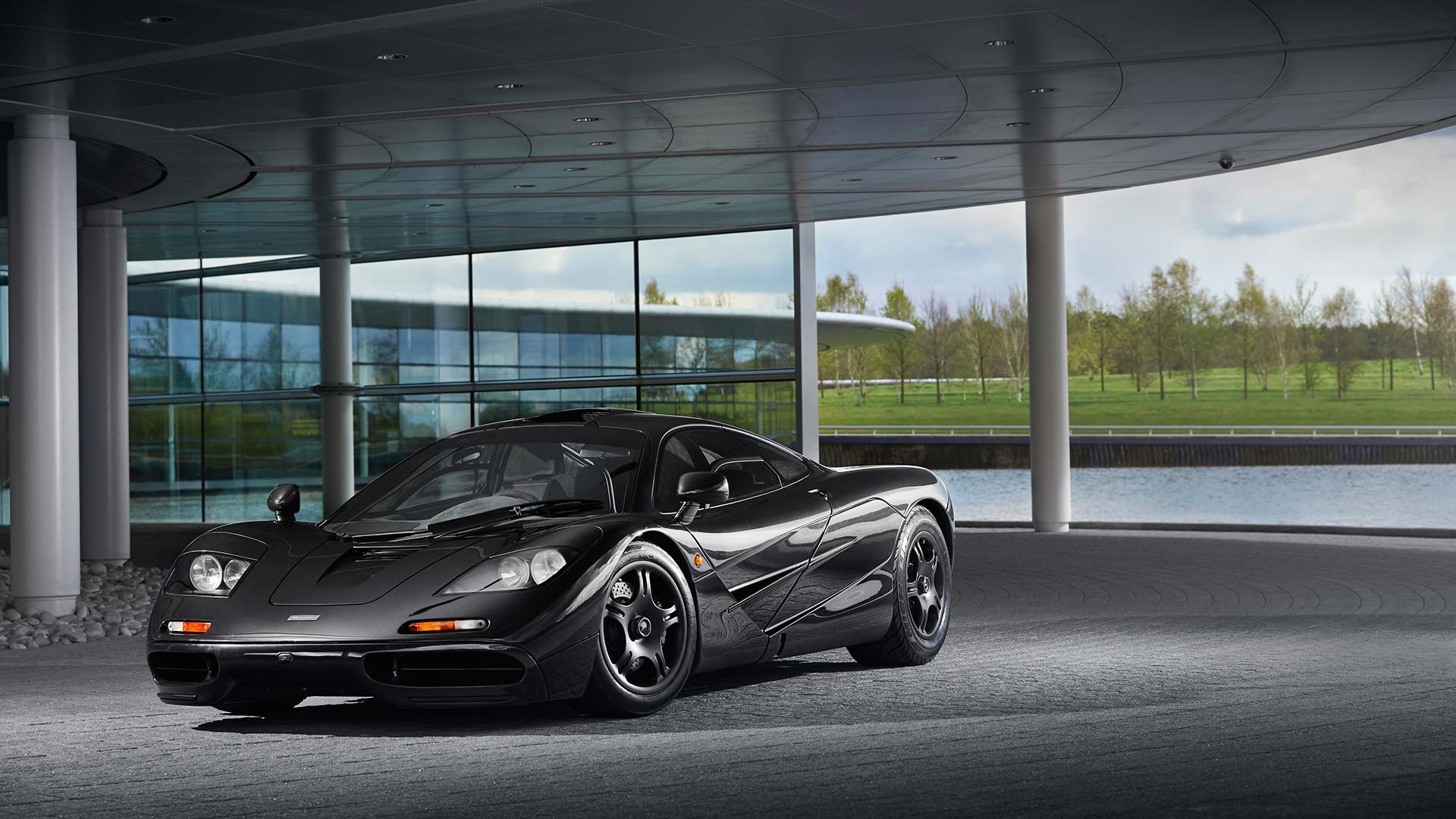
McLaren had been the dominant team in F1 during the late 1980s and early 1990s, mastering the use of lightweight materials like carbon fiber. Designer Gordon Murray convinced McLaren to back his vision of a three-seater sports car, using the knowledge the company had gained from Formula 1.
The result was the F1, built around a carbon fiber chassis and fitted with a BMW V-12 engine. Murray had been fastidious in his pursuit of performance, with details like gold leaf used in the engine bay as a heat shield. With 618 horsepower, the F1 became the world’s fastest production car in 1998, setting a top speed of 240.1 mph.
McLaren names a supercar after a legendary driver
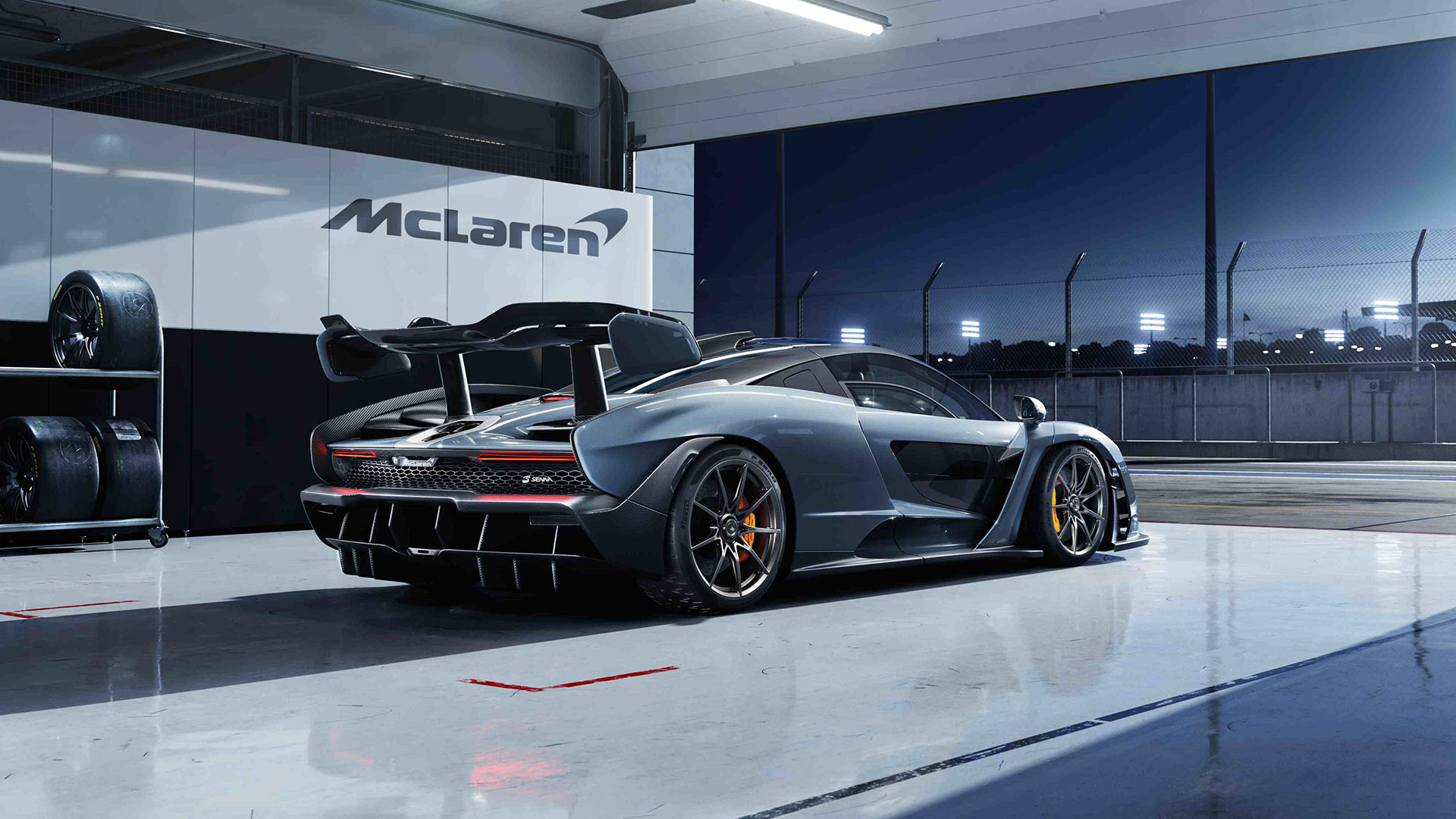
The F1 was the first step taken by McLaren into the road car market, with the company now responsible for producing almost 5,000 cars a year. In 2018 it introduced the latest in its ‘Ultimate Series’, named after Ayrton Senna – the legendary F1 driver who won three World Championships with McLaren.
Limited to 500 units, the Formula 1 inspiration includes Brembo carbon ceramic brakes, special center-lock alloy wheels, and a roof-mounted air intake. Power comes from a twin-turbocharged V-8 engine, producing 789 horsepower and 590 lb-ft of torque.
Sergio Perez and the McLaren P1
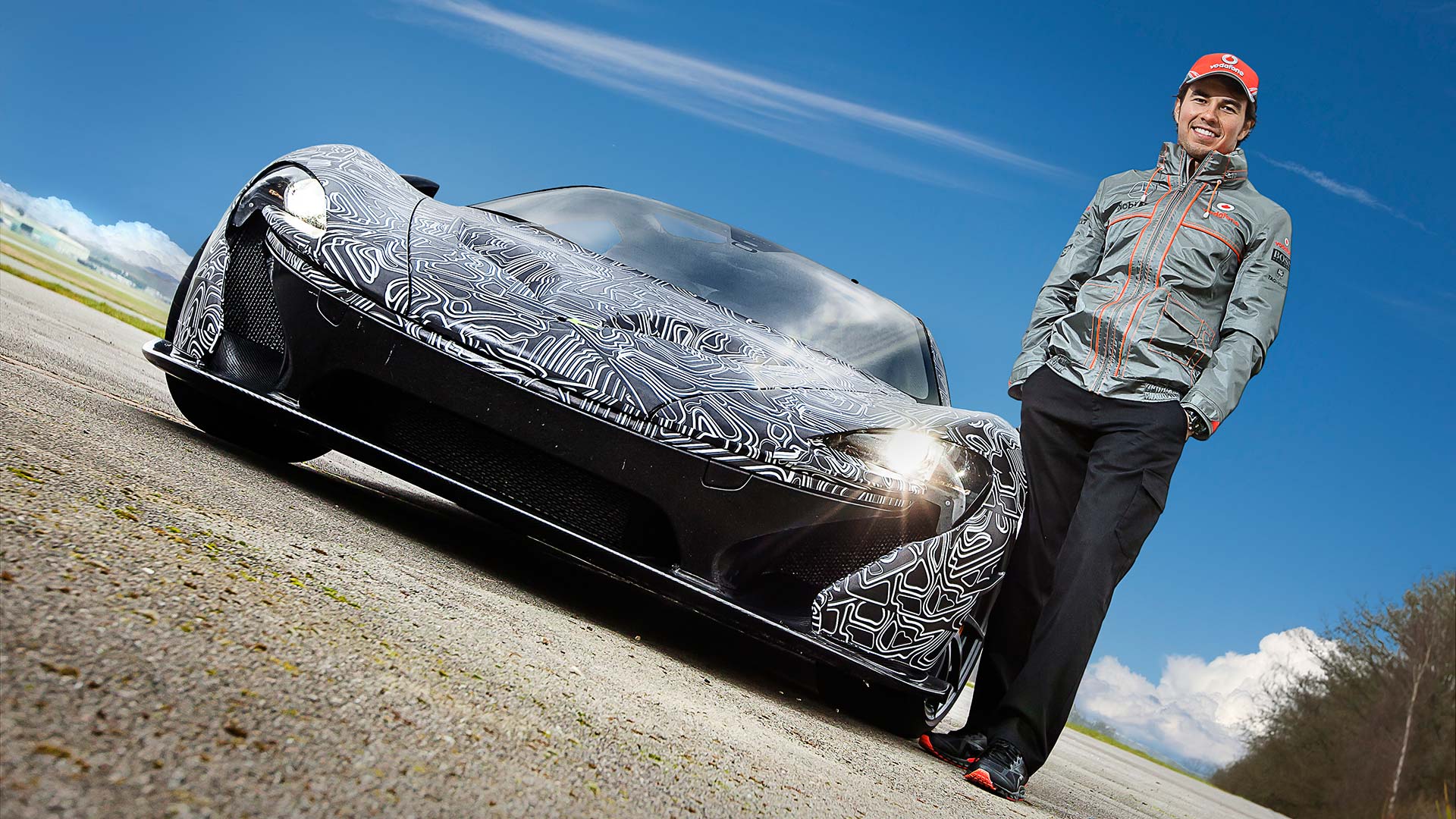
Before the Senna, McLaren Automotive’s most recent Ultimate Series hypercar was the P1. Launched in 2013, the development and release of the hybrid-powered machine coincided with Mexican driver Sergio Perez joining the McLaren Formula 1 team.
Part of this included Perez being tasked with demonstrating the performance of the new P1 road car on the Top Gear test track. Driving a 903 horsepower hypercar on a closed course was likely to be one of the easier corporate responsibilities for Perez, who was unceremoniously dropped by McLaren and the end of the 2013 season.
McLaren driver Lando Norris and his company car
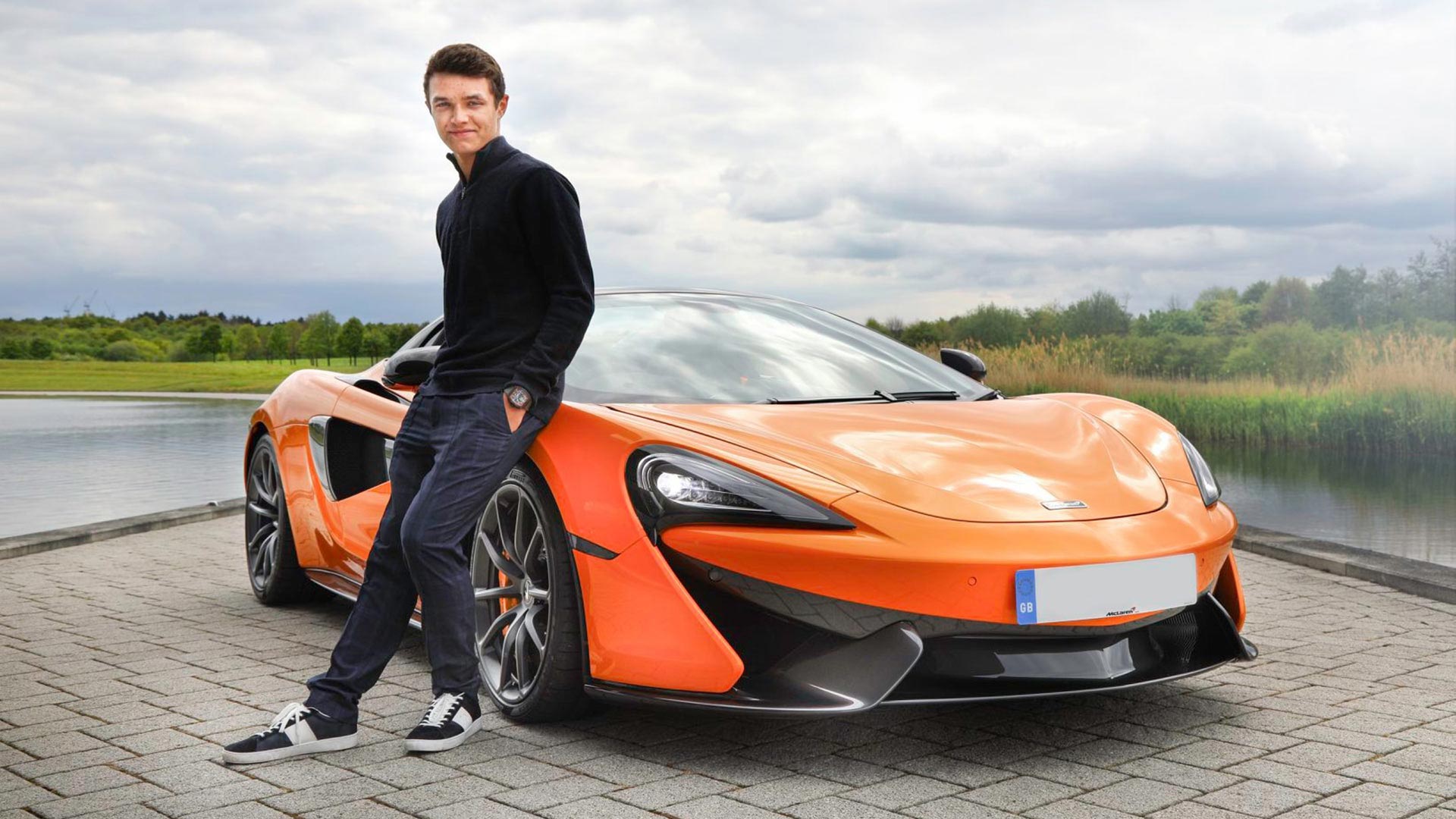
Current McLaren Formula 1 driver Lando Norris is performing well in this first season with the team. The 19-year-old is also rather pleased with his company car at McLaren, having taken delivery of a 570S coupe.
Powered by a twin-turbocharged V-8 engine with 570 horsepower, the 570S is capable of a top speed in excess of 200 mph. This is certainly not your usual car for a teenager, but then Lando Norris is not an average teen driver.
Linking the Honda Civic Type R to Toro Rosso
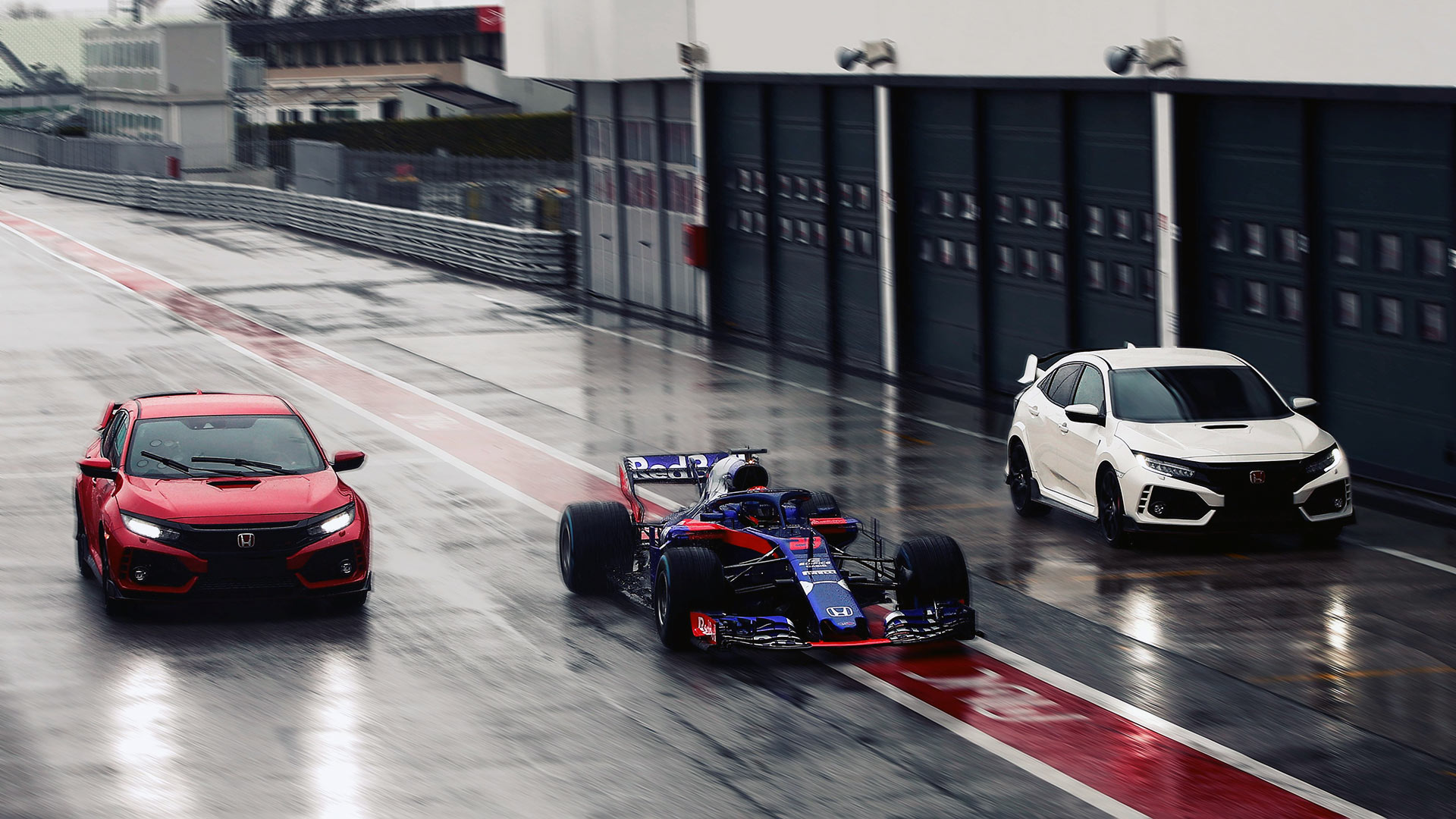
The latest Honda Civic Type R has become the first version of the performance compact car to be sold in the United States. As a global product, Honda has been keen to use its presence in Formula 1 to spread the message of its new Type R.
Honda currently supplies engines to the Toro Rosso F1 team, meaning its drivers for the 2018 season bagged themselves new company cars. Pierre Gasly and Brendon Hartley took delivery of their own turbocharged Type Rs last year. There is no word on whether Hartley had to return his when he left the team at the end of the year…
From a time when McLaren and Honda were still friends
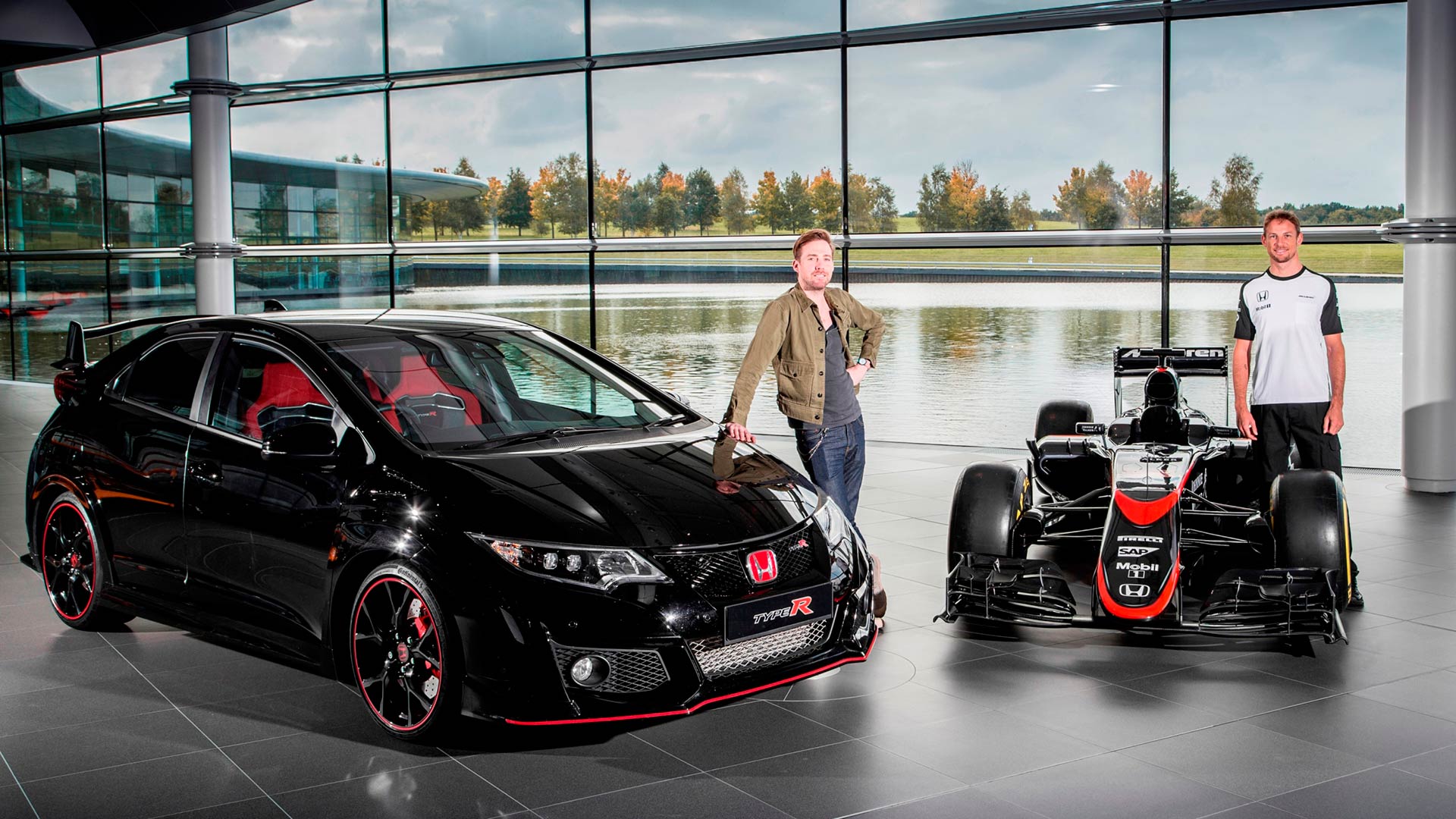
Honda supplied McLaren with engines from the 2015 season through 2017. It marked the return of the Japanese manufacturer to F1 as an engine builder for the first time in seven years, with a change to the new turbo hybrid era also taking place.
The three seasons were fraught, with the Honda engines suffering from terrible reliability issues. Even when it did work, the power plant was also noted to be down on performance. Despite this, McLaren driver Jenson Button was still on hand to try and help sell the benefits of the Honda Civic Type R and its turbocharged engine.
Fernando Alonso tests the new NSX
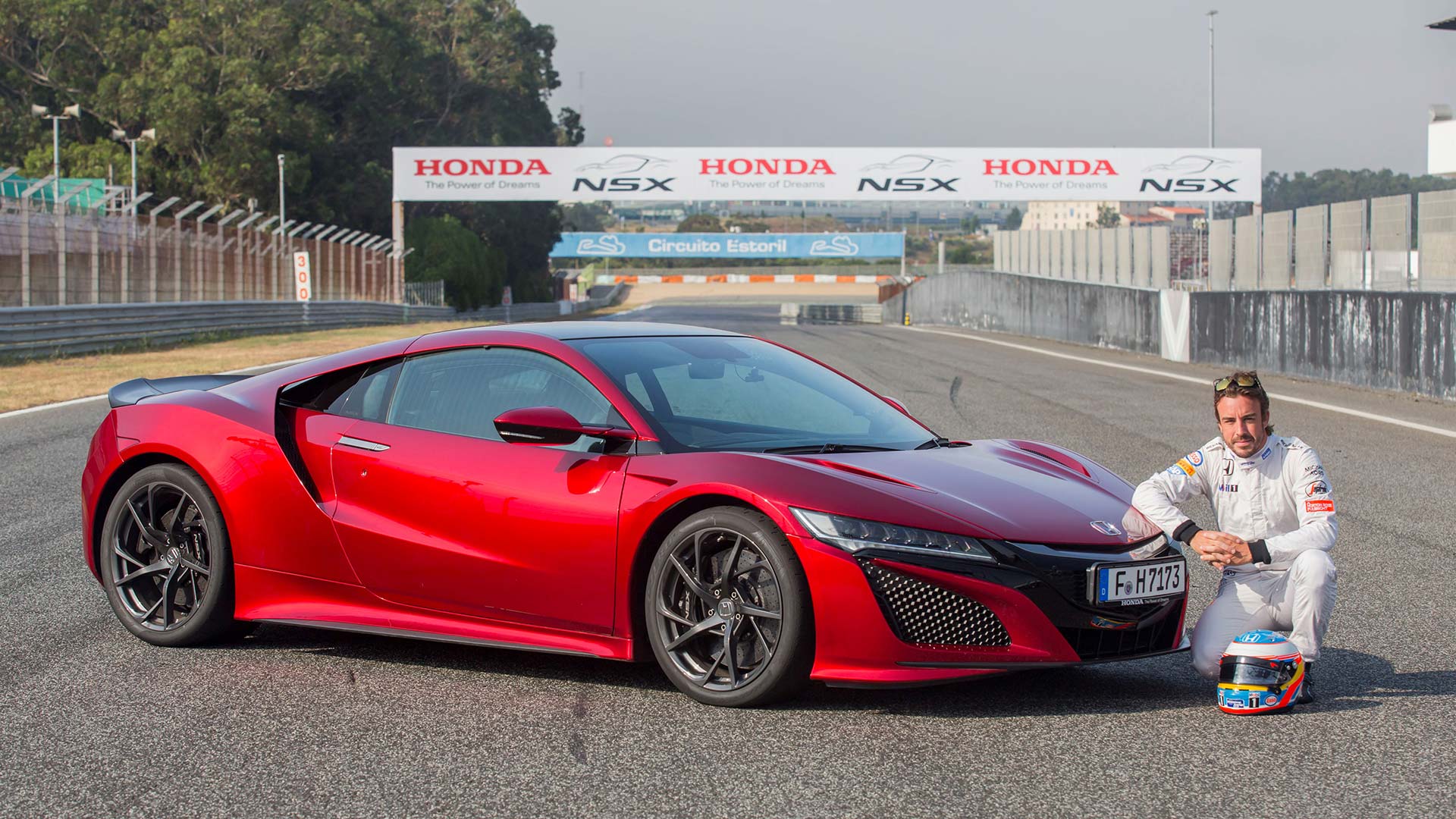
The original Acura NSX was developed with assistance from Ayrton Senna, whilst Honda was responsible for supplying engines to McLaren. Fast-forward to the second-generation NSX, and Honda was once again in charge of engines to power McLaren’s F1 contenders.
Despite the animosity between the two companies, McLaren driver Fernando Alonso still took part in marketing events like driving the new NSX. F1 inspiration can be found in the turbocharged V-6 engine and its hybrid electric powertrain. Alonso also found that the braking ability of the NSX was closest in feel to his F1 racer.
Aston Martin and Red Bull Racing working together
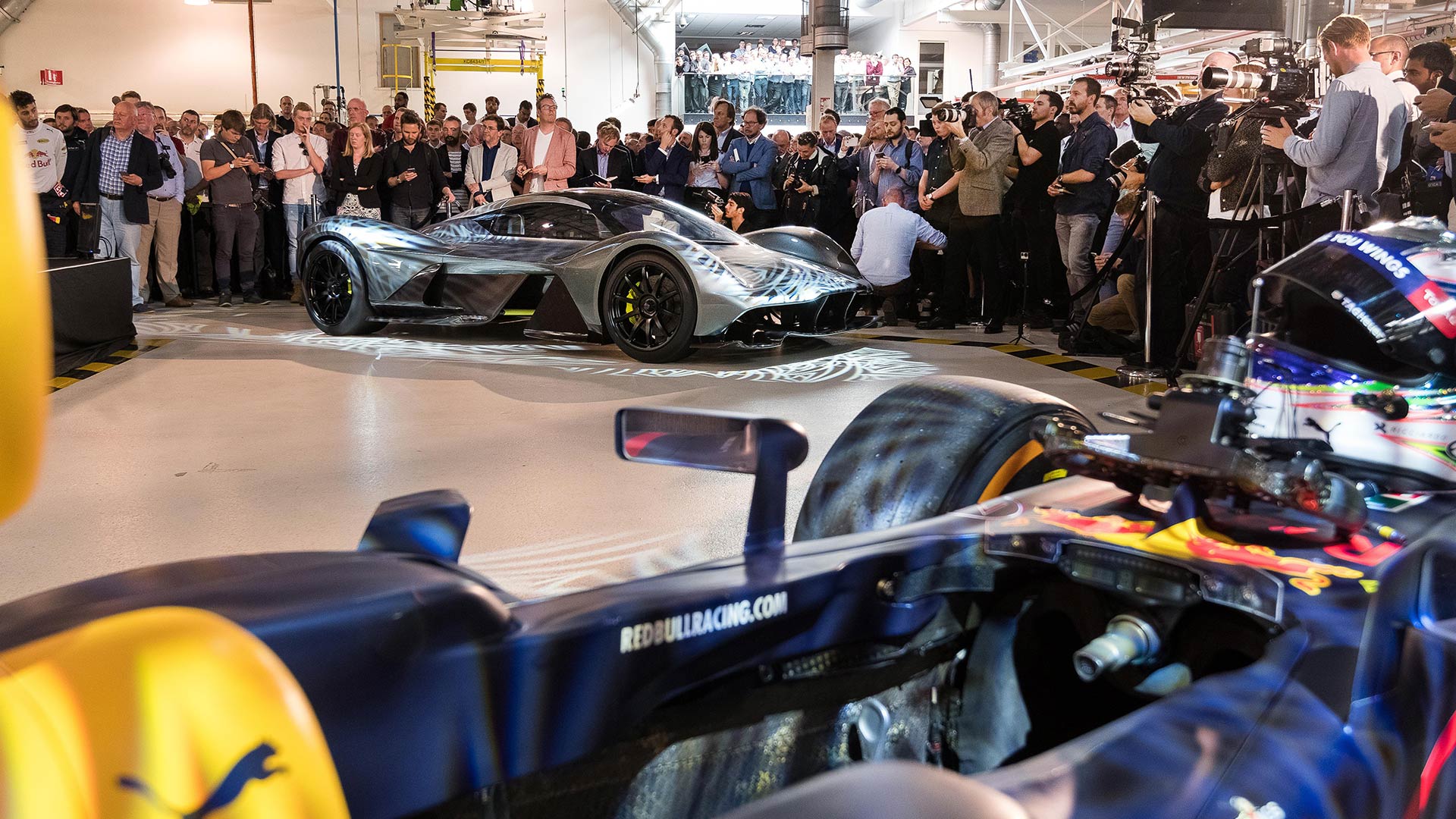
Red Bull Racing adopted car manufacturer Aston Martin as a title sponsor during 2018, whilst the two companies were involved in the creation of the ultimate road car. Details first emerged in 2017 of plans for a mid-engined Aston Martin hypercar, with input from Adrian Newey – Red Bull Racing’s Chief Technical Officer.
Advanced aerodynamics, lightweight carbon fibre construction, and an F1-inspired energy recovery system are all ideas provided by Red Bull Racing for the Valkyrie.
Aston Martin Valkyrie hits the tracks
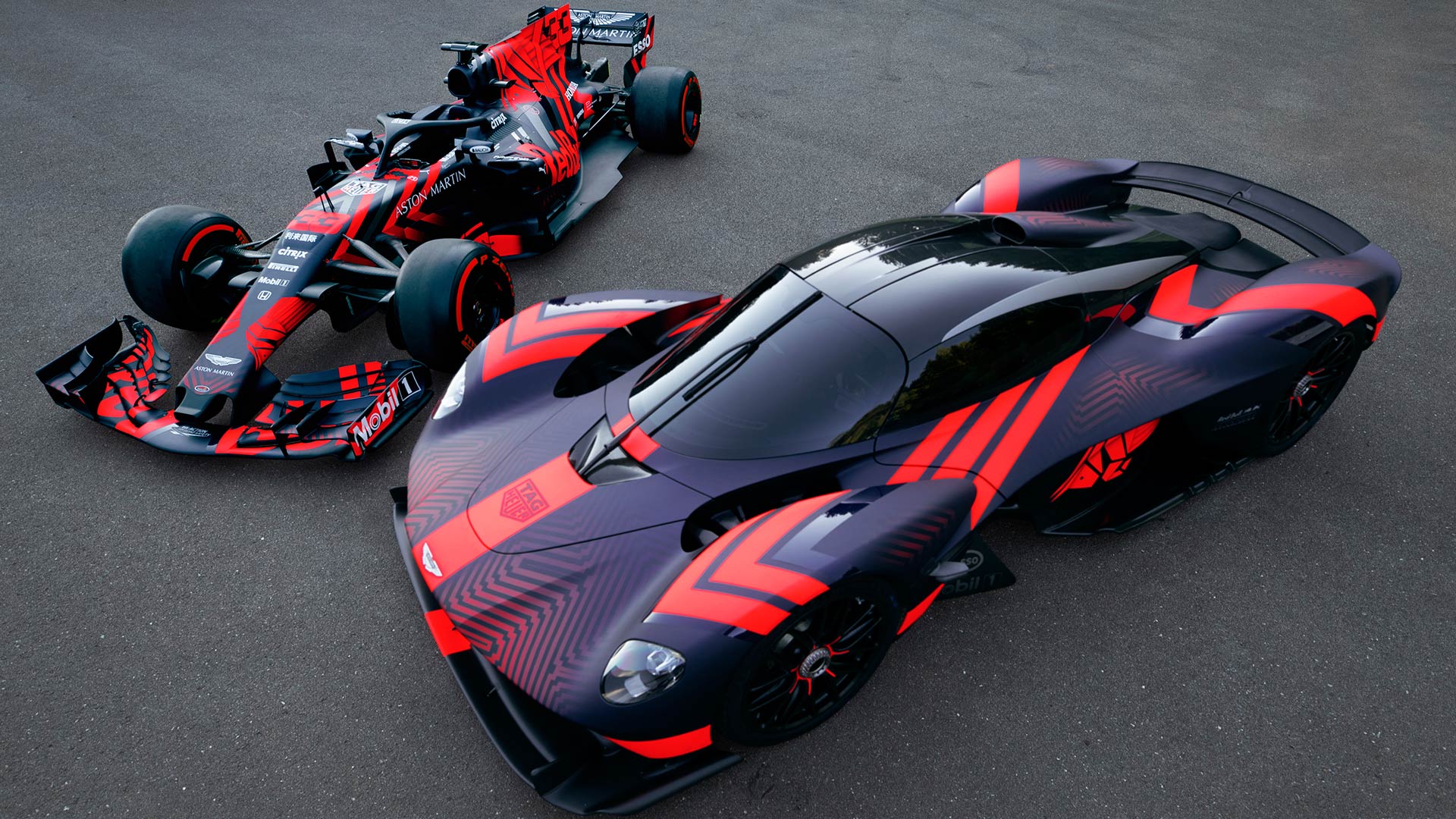
The engine in the Valkyrie is supplied by Cosworth Racing, producing an astonishing 1,160 horsepower from a 6.5-liter V-12. An F1-style paddle shift transmission is part of the package, whilst the seats for each of the 150 examples of the Valkyrie will be custom fitted to their buyer.
For those who find the regular Valkyrie too vanilla, Aston Martin also plans an AMR Pro version. This will feature a more aggressive energy recovery system for an extra power boost, and carbon-carbon brakes inspired by Formula 1. It will generate so much downforce that the AMR Pro could, hypothetically, be driven upside down.
Infiniti rewards Vettel with a special edition FX50
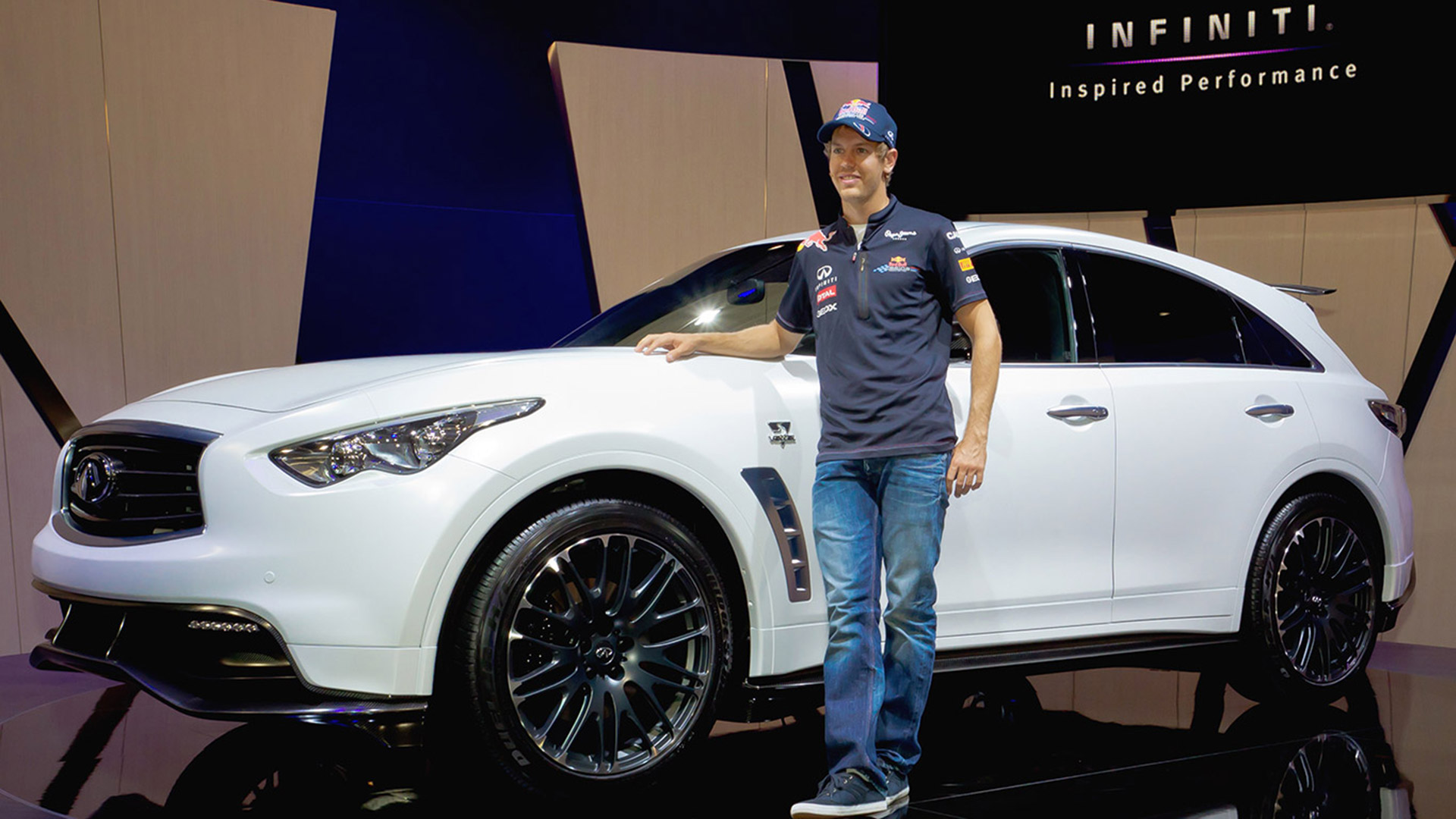
Red Bull Racing enjoyed considerable success from 2010 to 2013, securing four World Championships with Sebastian Vettel. The team also established a sponsor partnership with Nissan’s luxury division, Infiniti.
To celebrate Vettel’s success, in 2012 Infiniti created a special edition of the FX50 SUV. The changes included matte white exterior paintwork, an aggressive aero kit inspired by an F1 car, and a 5.0-liter V-8 engine with 420 horsepower. Buyers could also opt for a gigantic carbon fiber rear spoiler, adding $6,000 to the $127,000 list price.
Daniel Ricciardo with the Infiniti Q50 Hybrid
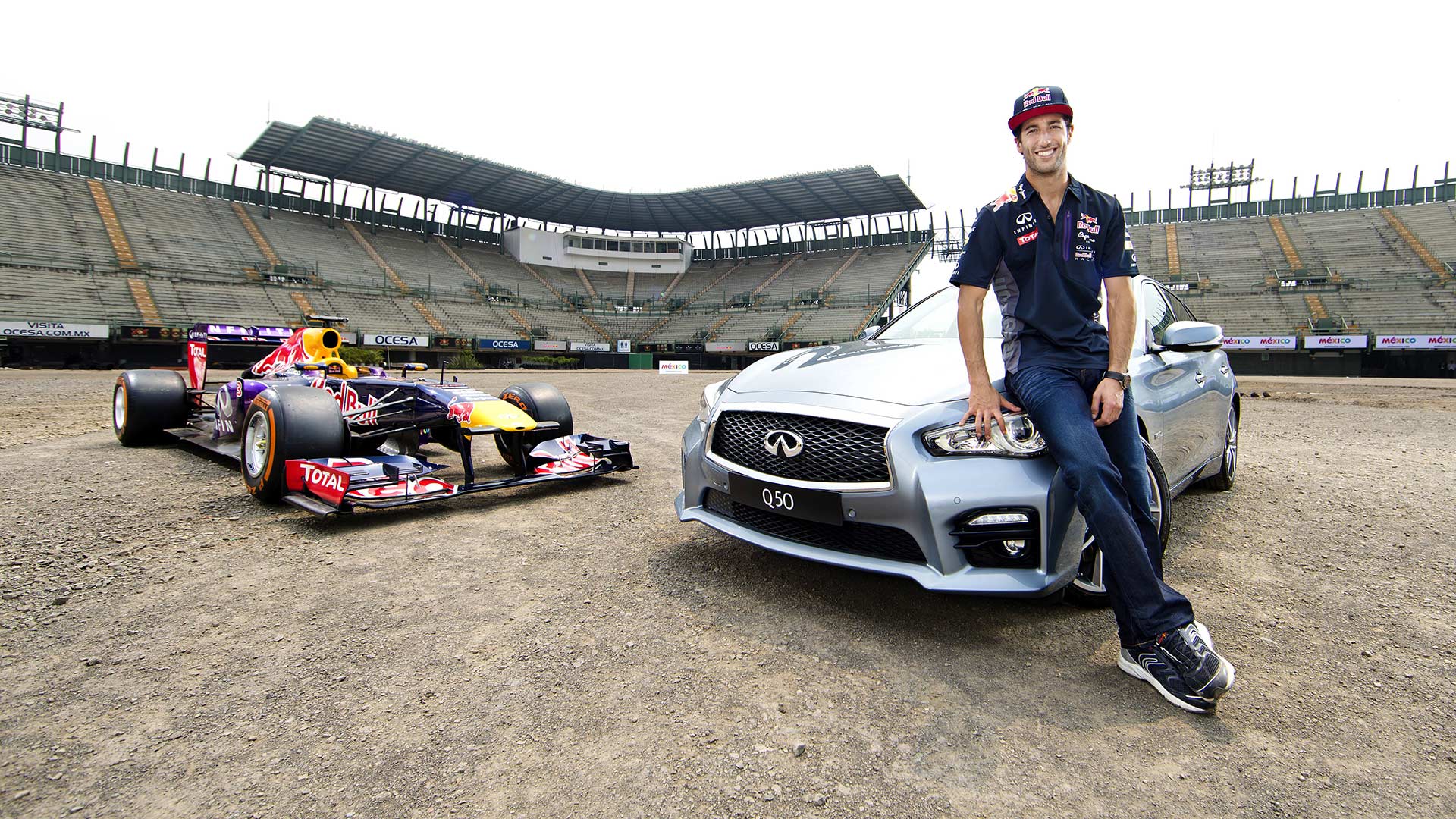
At least Vettel could be proud that Infiniti created a car with more power and a large spoiler for him. During his time with Red Bull Racing, in 2015 Australian driver Daniel Ricciardo became the first Formula 1 driver to test out the redesigned Autódromo Hermanos Rodríguez circuit in Mexico City.
Ricciardo had to make do with driving the updated race track in an Infiniti Q50 Hybrid sedan. This featured 359 horsepower from a 3.5-liter V-6, combined with an electric motor. Ricciardo could only watch, as then Toro Rosso test driver Carlos Sainz Jr. took to the track in a Red Bull Formula 1 car.
Renault Sport and the range of Megane hot hatches
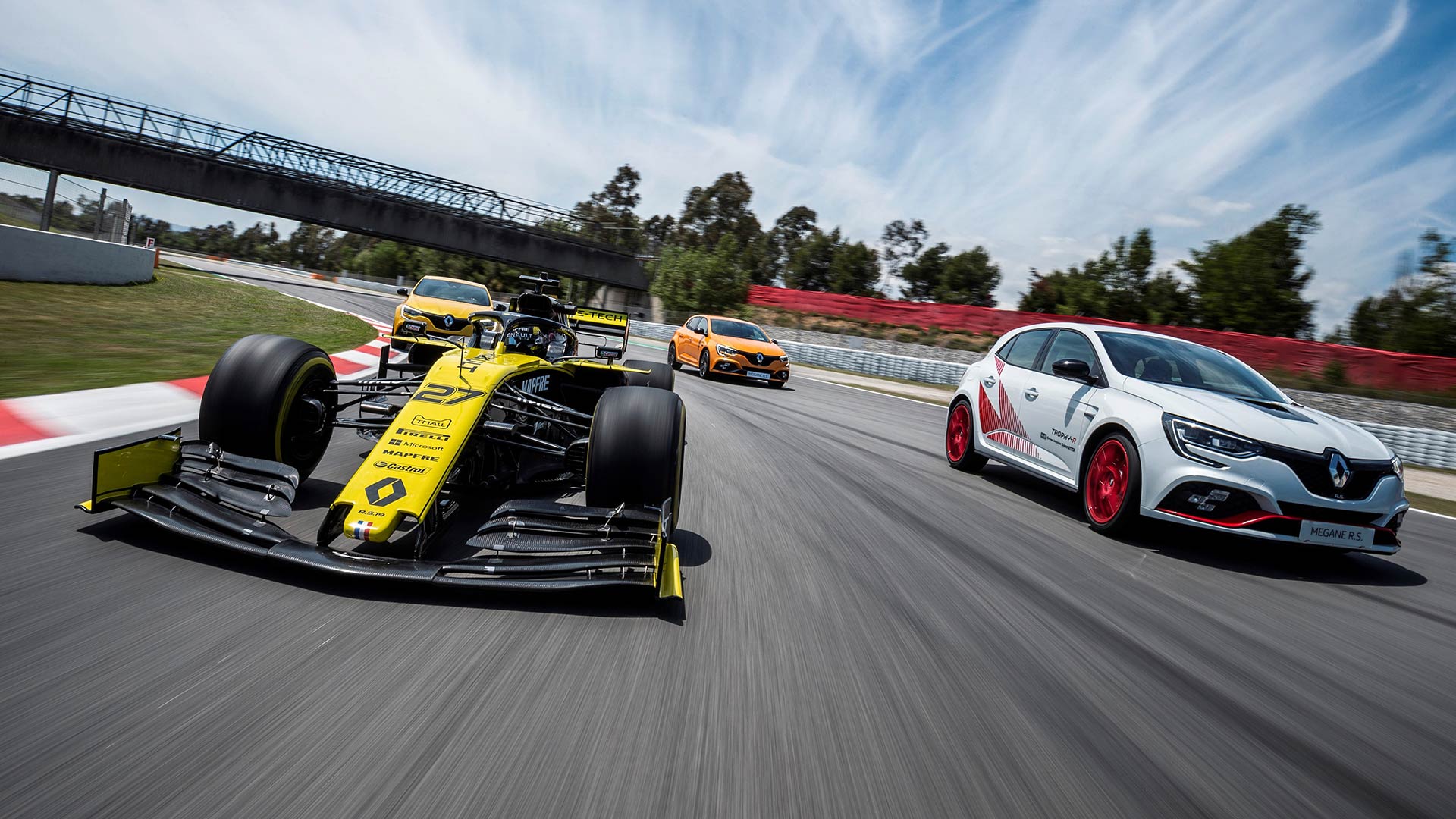
Renault has had a lengthy involvement with Formula 1, entering its own team in 1977 and supplying engines to others since 1983. Underpinning this on-track activity has been a range of road-going performance cars, said to take inspiration from the track.
The latest in this lineage is the Megane R.S. Trophy-R, powered by a 300 horsepower 2.0-liter turbocharged engine. An Akrapovic titanium exhaust, carbon fiber bodywork for the hood and rear diffuser, plus optional carbon fiber wheels all link to Renault’s F1 efforts. With a price starting at $65,000, the cost of this compact hatch is also F1-inspired.
Megane Renault Sport 230 Renault F1 Team
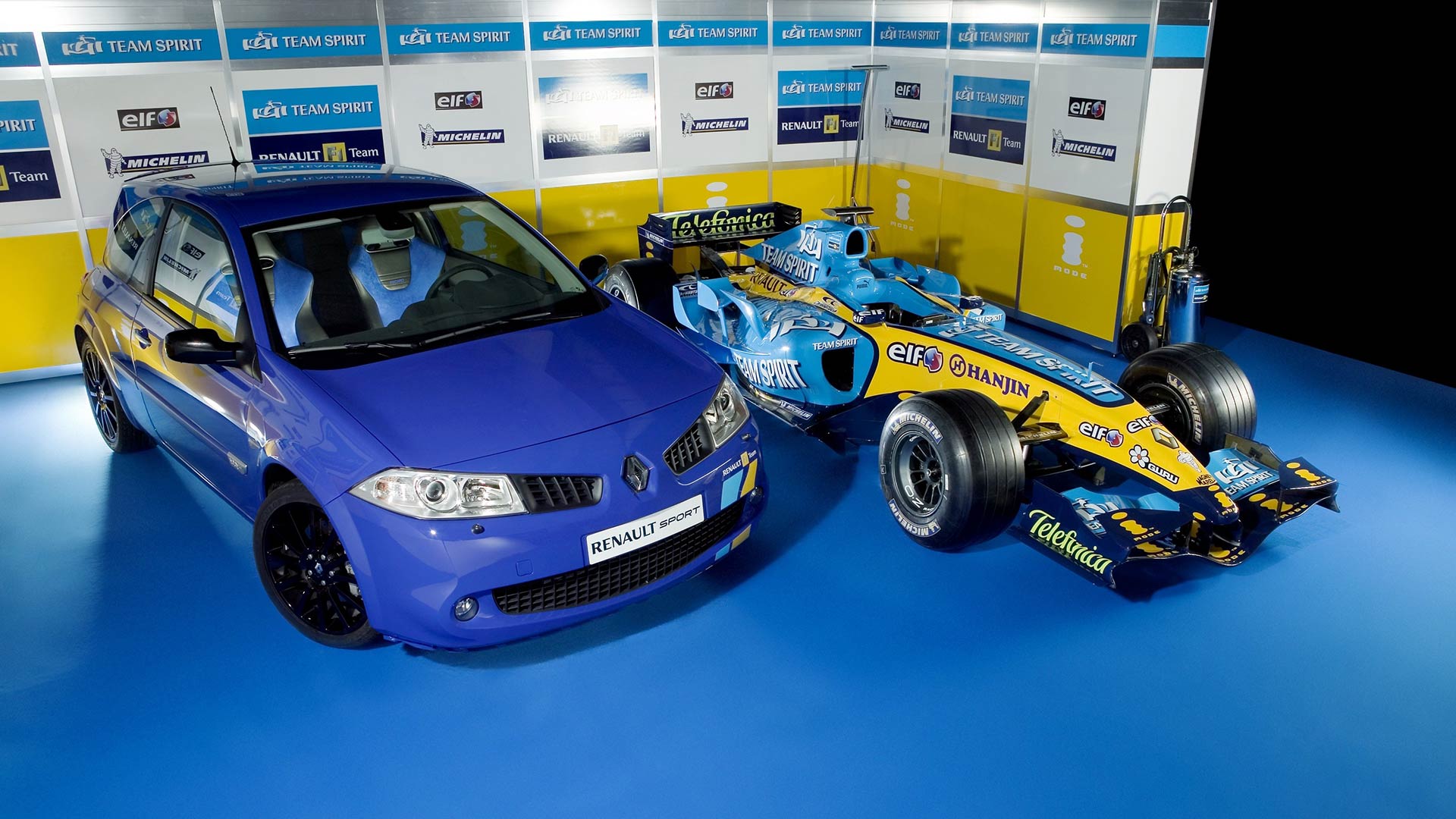
Back in 2006, Renault was the team to beat in Formula 1, as Fernando Alonso tasted title success with the team in 2005. A year later he was on track for a second championship, whilst Renault released a special edition of the Megane hatchback to celebrate.
In addition to the incredibly lengthy name, the R.S. 230 Renault F1 Team gained lightweight alloy wheels, special decals, and Recaro seats. Far removed from Alonso’s weekend racer, the R.S. 230 still proved popular with European hot hatchback fans.
F1 dominance leads to the Renault Clio Williams
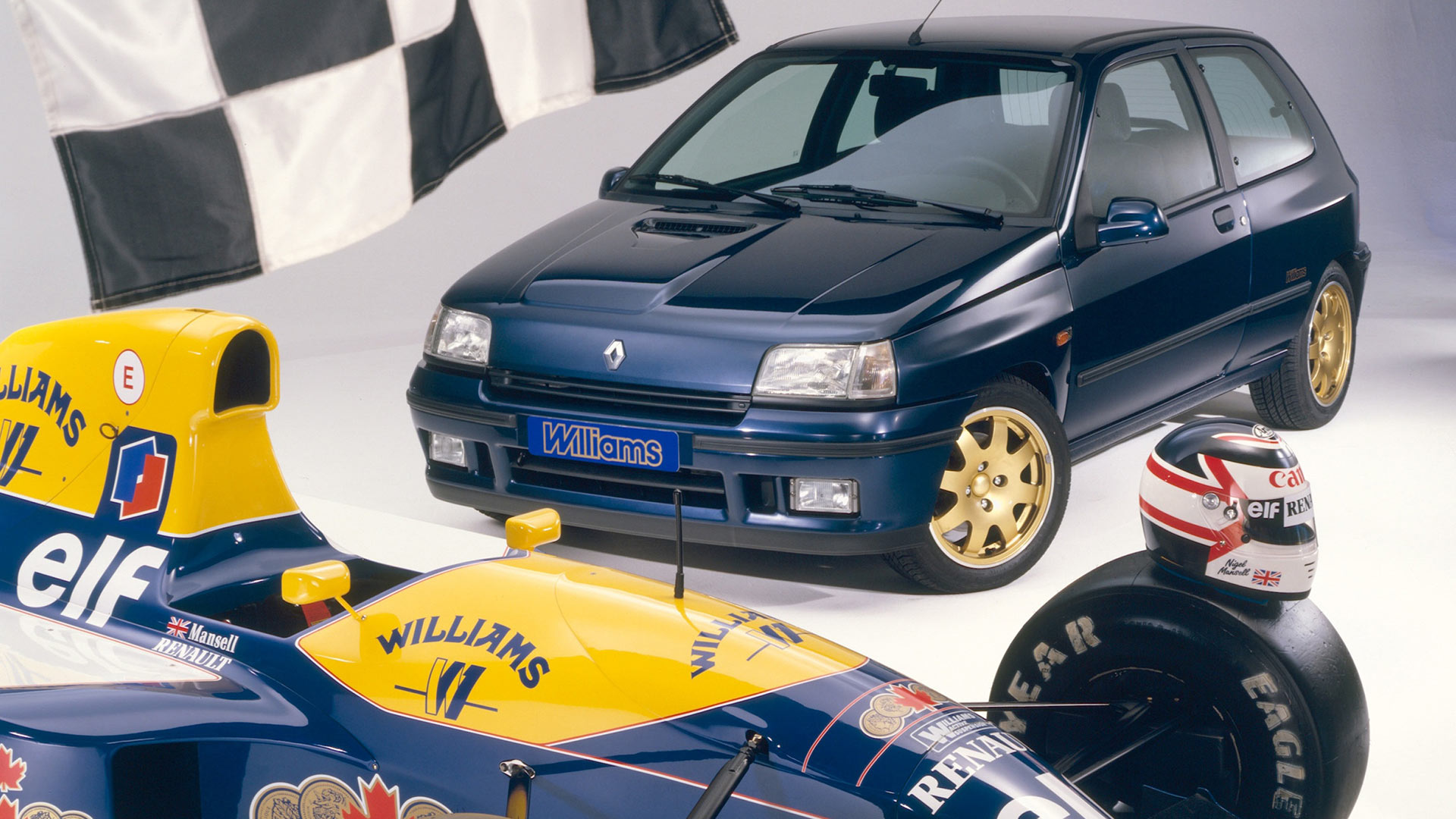
Renault has a track record for producing hatchbacks inspired by Formula 1 success. The early 1990s saw a dominant partnership with Williams Racing, with a special version of the Clio supermini created in 1993. It led to a highly respected hot hatch, featuring a 145 horsepower 2.0-liter engine.
Although the links to the F1 were limited to badging at best, the Clio Williams did actually enjoy on-track action during the 1996 F1 season. A Clio Williams served as the safety car for the Argentine Grand Prix that year, spending several laps controlling the field.
The time Renault placed an F1 engine in the Espace minivan
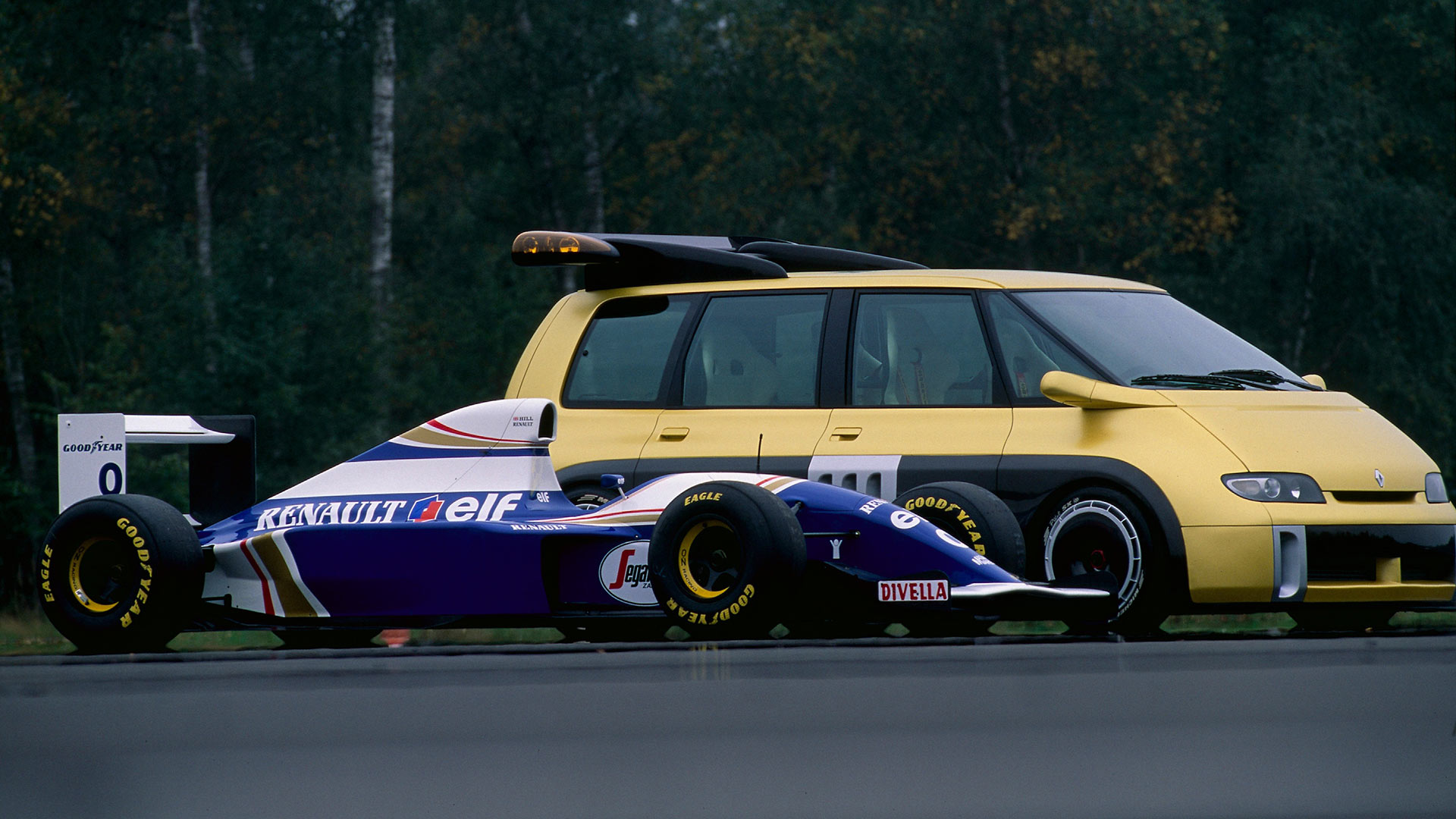
Two years later in 1995, Renault decided to celebrate its continued Formula 1 success with the sheer madness of the Espace F1. Mounted in the middle of the minivan was a 3.5-liter V1-20 engine taken directly from a Formula 1 car, and uprated to 789 horsepower.
A semi-automatic transmission was also fitted, along with carbon ceramic brakes. Four bucket seats allowed passengers to enjoy the performance, which included accelerating from 0-124 mph in just 6.9 seconds. Unsurprisingly, the Espace F1 remained as a concept only.
Daniel Ricciardo gets his own special Koleos SUV
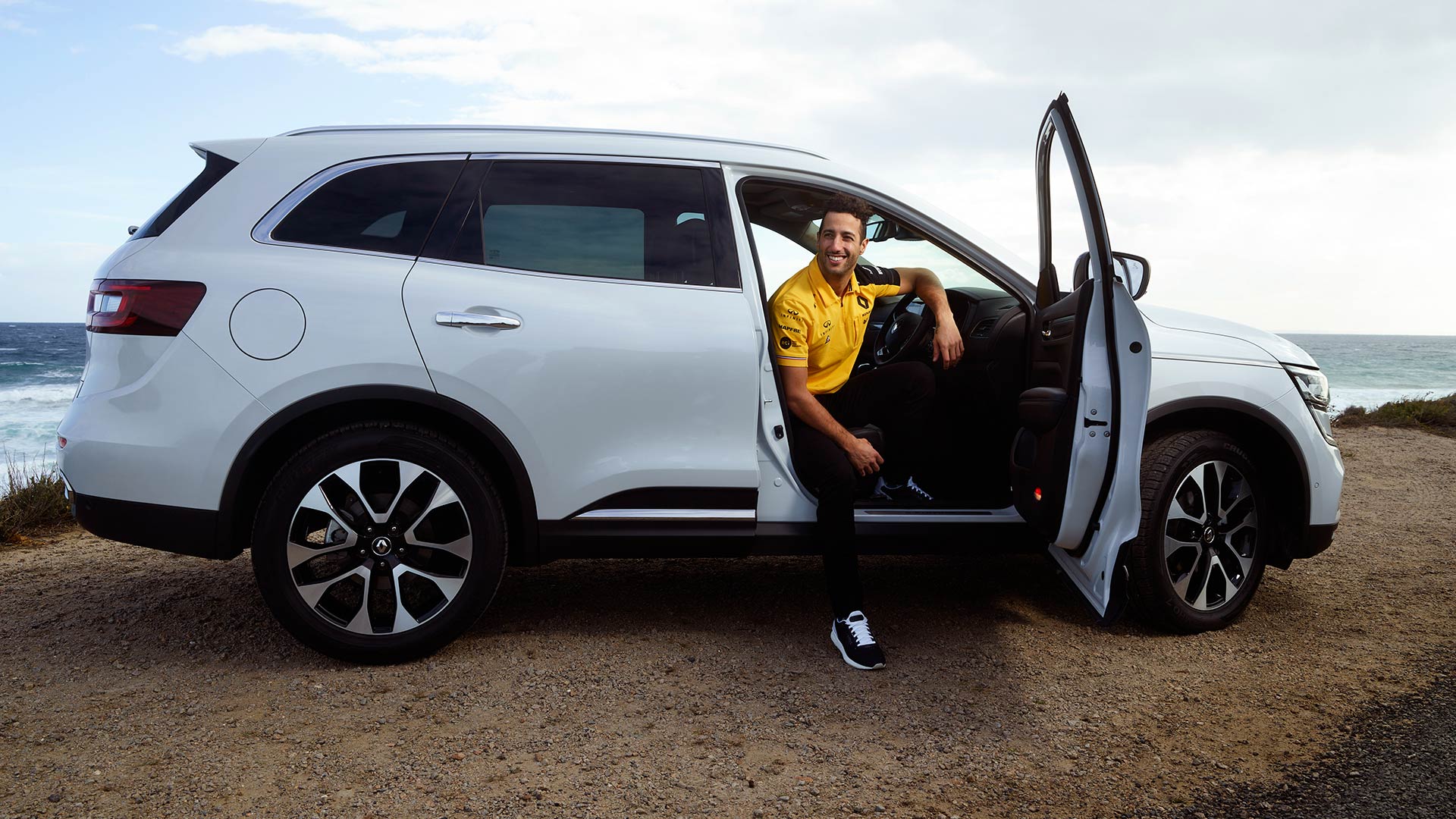
Formula 1 fans were shocked when Daniel Ricciardo abandoned Red Bull Racing for Renault at the end of the 2018 season. However, the move opened up possibilities for Renault to market F1-inspired products in Ricciardo’s Australian homeland.
Available only in Australia, the Koleos Formula Edition adds 19-inch wheels, special side steps, and unique badging to the 400 examples. Ricciardo has been denied any Espace F1-style performance in this SUV though. A 2.5-liter gasoline engine offers more sedate performance with 169 horsepower.